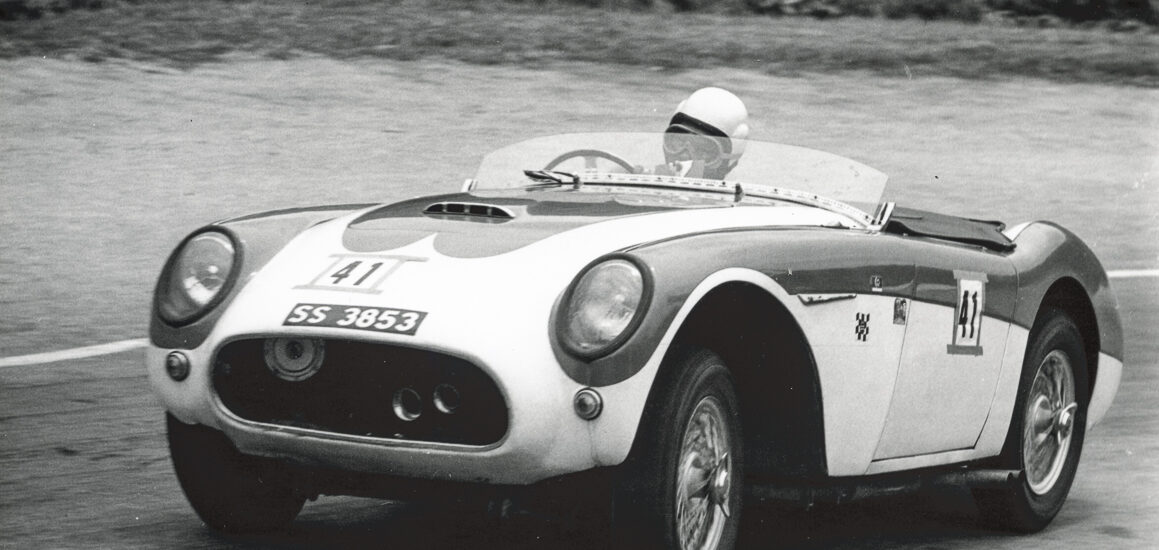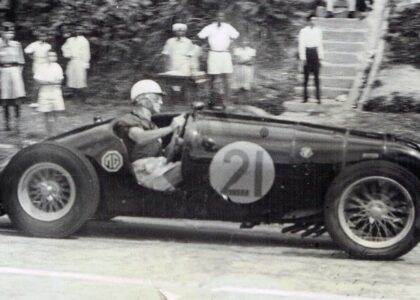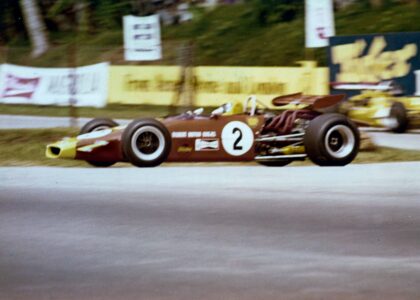History of the Gap Hill Climb in Singapore – 1927-1973
Last updated with additional images on 15 February 2024
By Eli Solomon
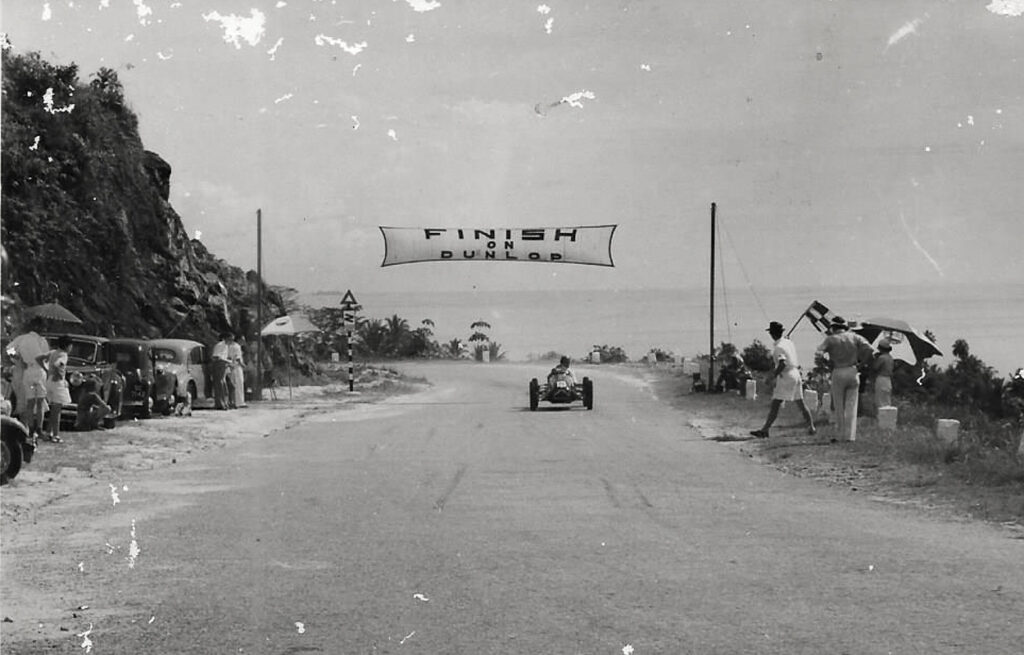
The Finish line of the Gap Hill Climb offered a fantastic view of Singapore from the south of the island.
The Friday, 2 September 1927 edition of the Malaya Tribune newspaper ran short and rather inconspicuous snippet titled “HILL CLIMB – Motor-Cycle Competition on Sunday”1. What is significant is that this was the first such motoring-related hill climb event at what was known as the Gap Road.
Locals know this as 99 bends and this is what one of the local experts writes:
“For those wanting the true Initial D experience, this is sure to make you feel like Takumi Fujiwara on his nightly tofu deliveries. Known as gao zhup gao wan (Hokkien for “99 bends”) because of its twisty nature, South Buona Vista Road is considered the most dangerous because of its many blind corners, roadside ditches and steepness.” 2 When you have 700bhp on tap, every corner (blind or otherwise) becomes a challenge.
Seldom are articles on the history of the Gap Hill Climb accompanied by a good selection of images, illustrations, or film, and none have attempted to document its history from the beginning. Here’s my attempt, including race results and records established. Additional photos will be added once we migrate our hard drives to a new storage facility. Additionally, film will be added as well, but the reels take time to digitise and even more time to edit for web use.
PART 1
RIDING STANDARDS
Between the years 1927 and 1929, the motorcycle platoon of the Singapore Volunteer Corps organised what became known as the Gap Hill Climb. The purpose of hosting a hill climb on the island was explained by Lt-Colonel Francis John Marshall Postlethwaite, Officer Commanding the Singapore Volunteer Corp, Straits Settlements Volunteer Force as follows: “The importance of its motor cycle unit to a military force operating in this country, taking as it does the place of cavalry, was stressed by Lt-Colonel Postlethwaite…will have the effect of attracting recruits for the Motor Cycle Platoon of the S.V.C., while serving the purpose of raising the standard of riding of the average motorcyclist…”3
As alluded to earlier, the original course was 1,660 yards (1.52km) long with the start at the bridge at the foot of Pasir Panjang Road, on Gap Road about 300 yards beyond the junction of Pasir Panjang Road.
The Gap Road course then consisted two “S” and three hairpin bends. Spectators were able to view the proceedings at any point alongside the course. The Royal Corps of Signals were employed as timekeeping. Programs came gratis and could be obtained at the race or at the Drill Hall4
At the 1927 event there were 37 entrants (there were six events run), entirely for motorcycles. The trophies were on display at the Drill Hall6
The finish line was at the Gap Roadhouse approach to Bare Hill (there was no Gap Roadhouse in 1927). As early as 1920, the Gap road already had a reputation as a magnet for speed demons. Today the Gap Road is called South Bouna Vista Road, the cars a considerably faster but the evolution of the cranium has lagged somewhat.
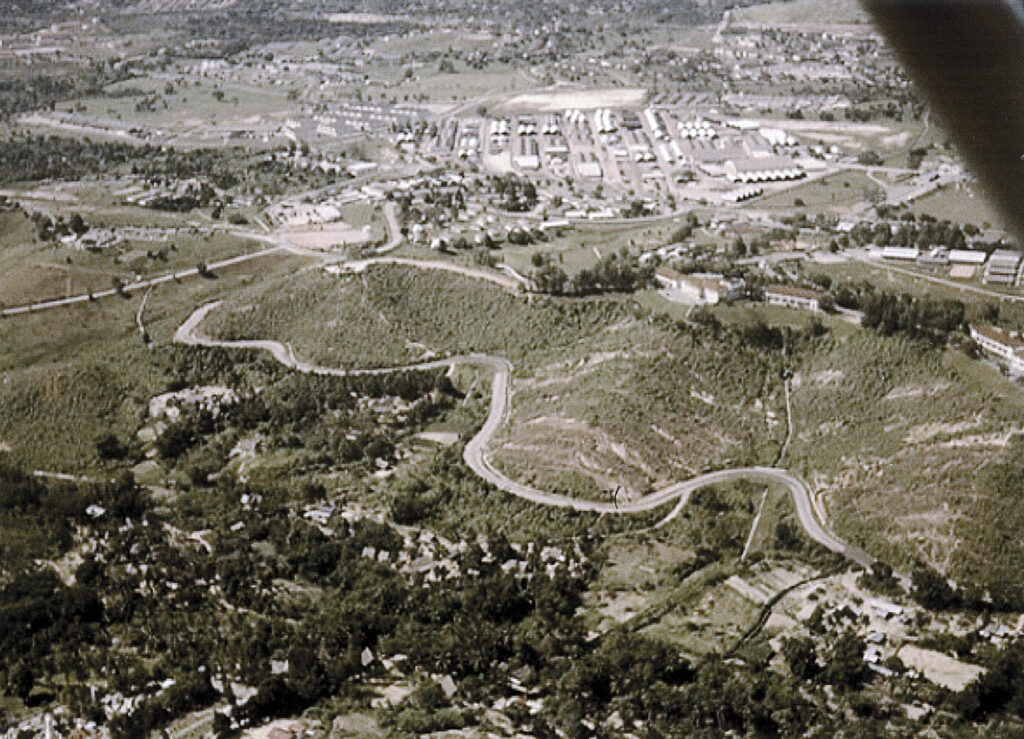
The Gap Road eventually became South Bouna Vista Road. The nullah can be seen dissecting the course at the Hairpin Bend in the middle of the photo. The accompanying photos shows the nullah. The hairpin was called Conrod Canyon.
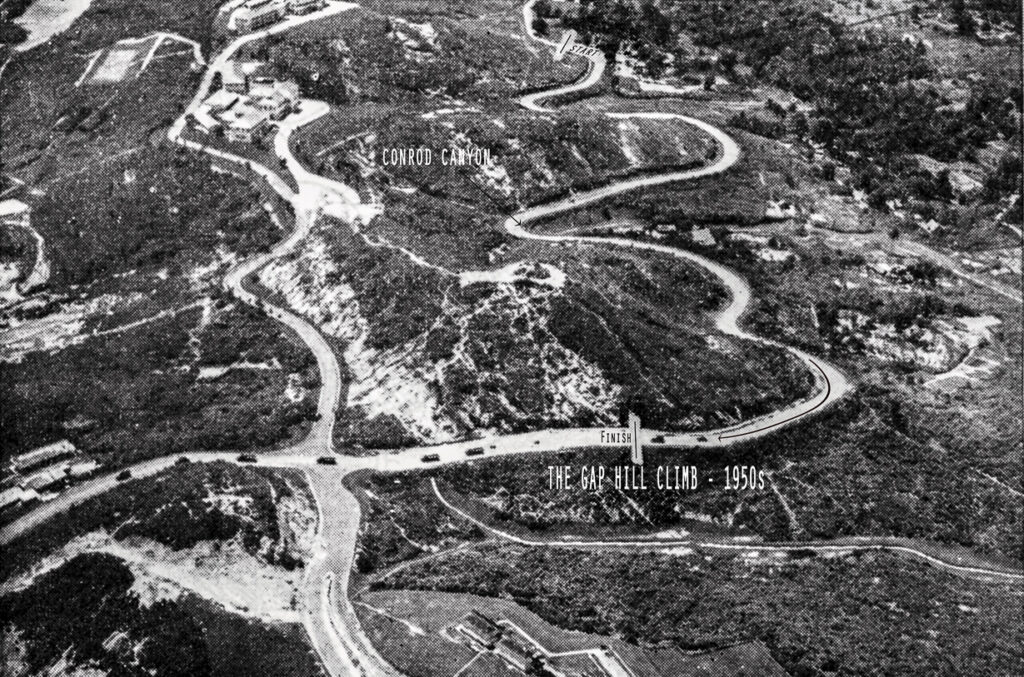
Another aerial view of the Gap Road showing the start at the top of the photo. Conrod Canyon (where the nullah dissects the road) is marked in this photo.
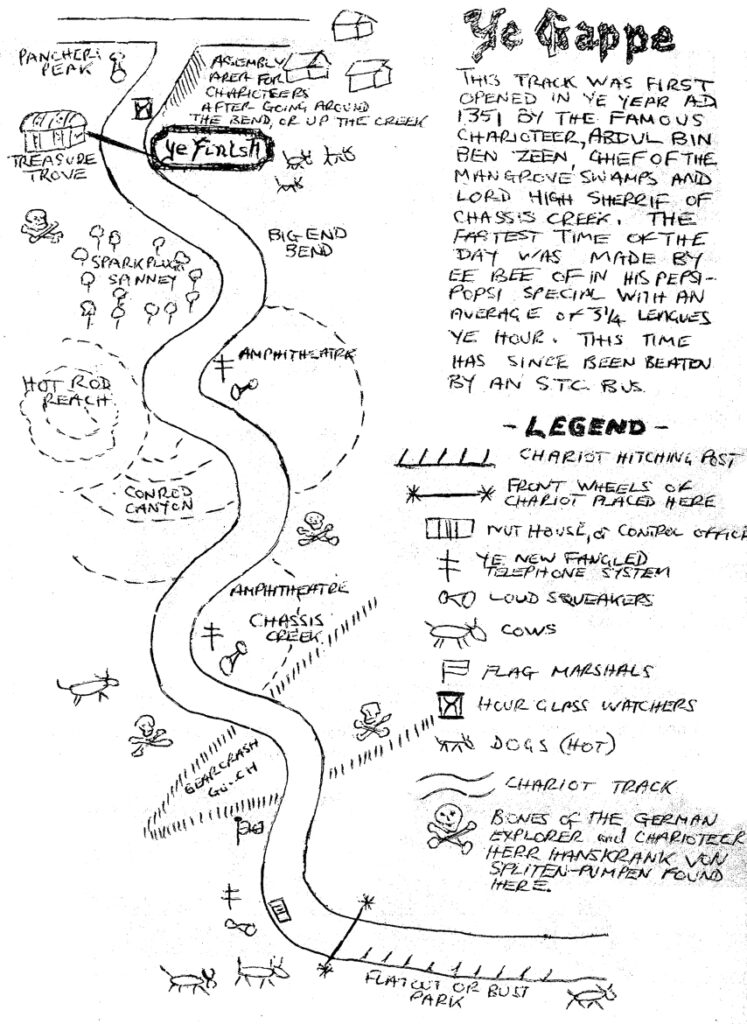
A drawn illustration of the Gap found in the programs from the 1950s.
THE GAP HOUSE
The Gap Roadhouse later became the Gap House, owned by Sjirk Jakobus Mulder and Jan Jakobus (his son) and in late 1934, was converted into a hostel. The hostel covered eight and a half acres and included a tennis court on land owned by Kim Seng Land (the Mulder lease expired at the end of 1940 but was extended till the end of 1942). It commanded a view of Singapore harbour and the hills around Bukit Timah.
The Gap House was officially opened to the public on 1 January 1935. I mentioned earlier that the peak at the top of the hill was previously referred to as Bare Hill. The new Gap hostel covered eight and a half acres and consisted of a tennis court, one guest room and modern sanitation. It had an unsurpassed view of Singapore that included the harbour and sea and the hills around Bukit Timah.
The Gap House offered visitors an idyllic setting for an evening out, drinks till midnight and refreshments and food day or night. [Sunday Tribune, 30 December 1934, pg.3]. The land on which the Gap House stood belonged to Kim Seng Land Co. Ltd. The company, started by Tan Kim Seng, were large landowners in Singapore. In the 1940 Gap Hill Climb program, acknowledgements were given to Kim Seng Land Co., Ltd., who gave permission for grandstands and other buildings to be erected on the hillsides overlooking the hill climb course.
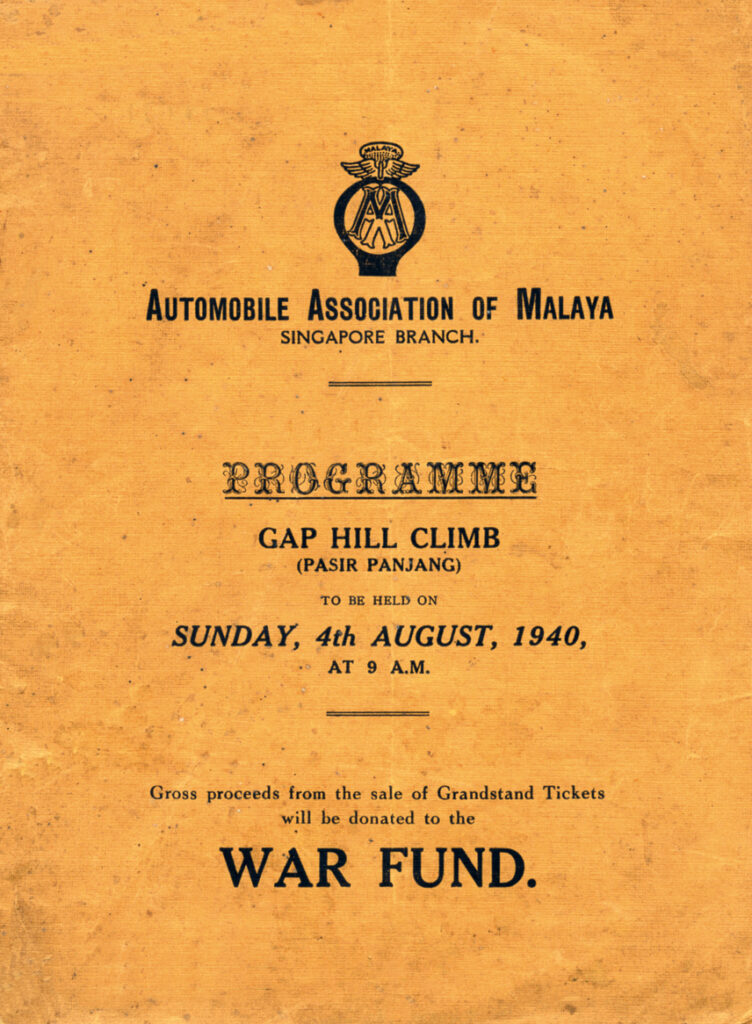
The 1940 edition of the Automobile Association of Malaya’s Gap Hill Climb was held on 4 August 1940.
After WWII, the land on which the House stood at the top of the hill was requisitioned by the military but the Gap Road (renamed South Bouna Vista Road – occasionally misspelt Buena Vista or Buona Vista) remained opened to the public. The course itself remained unchanged. Road closure for the event was from the Pasir Panjang Road-South Bouna Vista Road junction up to Hog’s Back Road. Hog’s Back Road (now Kent Ridge Road) led to Marina Hill to the right of the course.
EARLY GAPS
The Gap was only for motorcycles the first year it was held. The following year, the event was held on Sunday 1st September 1928, this time with twenty entrants (including upcountry entrants) doing sixty runs. The press surmised that while the number of entrants was less than the previous year, the standard of riding was likely to be higher.
While the 1927 event was entirely for motorcycles, the 1928 event had two Lea-Francis cars entered 7 These were driven by Messrs. Edmund Robert Bruce Upton and Waddell, both making timed runs. It would not take long before the Gap would become the domain of the motorcar instead, but this would have to wait until 1939.
The two Lea-Francis cars driven by Upton and Waddell saw a best time of 1min 44 sec causing the press to exclaim that the Gap Road is “essentially a course where the nippiness of a cycle tells in comparison with a car.”
SINGAPORE CHAMPION
The 1929 Gap Hill Climb, while still organised by the Motor Cycle Platoon of the Singapore Volunteer Corps, now featured 38 motorcycles and a rather modest entry of just six cars: an 847cc MG M-Type Midget, an 848cc Singer Junior Sports, an 832cc Triumph Super Seven, an 847cc Morris Minor, a 990cc Fiat 509 and a 747cc Austin Seven. The Fiat (apparently a racing version sent out by the factory and driven by Fiat Works Manager in Singapore) won the event (1m 33 2/5 sec) with the MG in second.
The event was held on 8th September and was now referred to as “The annual motor cycle and car hill climb.” Of the 35 competitors entered, no less than 11 motorcycles and one car were to come from Selangor. Cars aside, the rules now segregated riders into two categories, “expert” entries and “novices.”
While the 1928 event saw a total of sixty runs during the day, the 1929 event would see 130 accents. The car was given two opportunities for their runs. There was also a team race between picked teams from Kuala Lumpur and Singapore. D.H. “Bobby” Waters, well-known Speedway rider from Singapore, set fastest time of the day in his Special TT Sunbeam (493cc), earning himself the title of “Singapore Champion.” The team event was won by the team from Kuala Lumpur.
FILLING THE GAP
The Great Depression put an end to such activities in Singapore and it was only after a ten-year hiatus that the Gap was resurrected on 11 June 1939. During that interregnum, motorsports in Malaya continued, albeit at a much slower pace. Gymkhanas were common but there were hill climbs upcountry. The Perak Motor Union held the Gopeng Hill Climb on 18 May 1930; the Selangor Automobile Club held a 16-hour 341 mile trial on 8 June 1930; and the Selangor Automobile Association held a hill climb up Weld Road to Court Hill in Kuala Lumpur on 24 May 1931.
Down in Singapore, the first post-depression event was held on 19 November 1933. This was a motor show and gymkhana at the old racecourse8, organised by the Singapore Branch of the Automobile Association of Malaya.
Upcountry events continued – with hill climbs in Penang, reliability trials up to Sungei Petani, sprints on Lornie Road in Kuala Lumpur as well as Tampin Road in Seremban. Singapore’s first post-depression speed event was held on 25 September 1938 on Farrer Road 9
Fastest Time of Day set by Ron McCreath, Malaya’s top cyclist and a veteran of the 1929 Gap, in a Triumph motorcycle was 42.8 seconds, two full seconds faster than fastest race car driver Lim Peng Han who completed his best run in his Ford V8 L.A. Special in 44.8 seconds.
END OF PART 1
PART 2
MONSTERS & MAVERICKS
The 1939 event was also the first time several locally built racing cars10 were represented at the Gap, Lim Peng Han leading the charge along with several L.A. Specials he built for customers. Two treacherous hairpin bends and a road surface made greasy by rain-induced thrills galore. Local judge, Conrad Oldham, in his recently-received Lim-built L.A. Ghost, promptly spun during his run while young lawyer and Municipal Commissioner, Geno Oehlers (Sir George Edward Noel Oehlers, the first Speaker of the Legislative Assembly of Singapore and the first Eurasian in Singapore to be knighted), was lucky to escape when his glittering new Mercury V8 Drophead Coupé smashed into the safety fence at the second hairpin bend.
WINDS OF WAR – The 1939 Gap Hill Climb
The Great Depression of 1929 put an end to motor sports events in Singapore, and it was only after a ten-year break that the Gap Hill Climb was resurrected, at the same location but this time under the banner of the Automobile Association of Malaya.
The uphill course was reduced to exactly half a mile with two tight bends. Local council restrictions meant that road closure for the event was limited to between 8am and 1.30pm on a Sunday.
The June 1939 hill climb set a milestone for local motor sports as it was the first time several locally built racing cars were entered, most in preparation for the much-awaited Malaya Grand Prix (which never materialised in 1939 – See GENESIS AND THE WINDS OF WAR).
THE MAVERICKS
Lim Peng Han, a local racer and builder, had returned from the UK a few years earlier. His built-in-Singapore L.A. Specials were crafted especially for judge Conrad Oldham, Lt. Peter Braid R.A., and himself.
Oldham’s Special was called the L.A. Ghost, a somewhat ill prepared Ford V8-engined car of enormous length that was neither tuned nor tested before the event. Its prodigious length was to become a major impediment around the course (see THE GHOST OF MALCOLM ROAD). Lt. Braid’s L.A. MG Monoposto has the accolade of being the first single-seater built in Malaya (including Singapore). His MG T-Type engine also had “an indeterminably high compression ratio”.
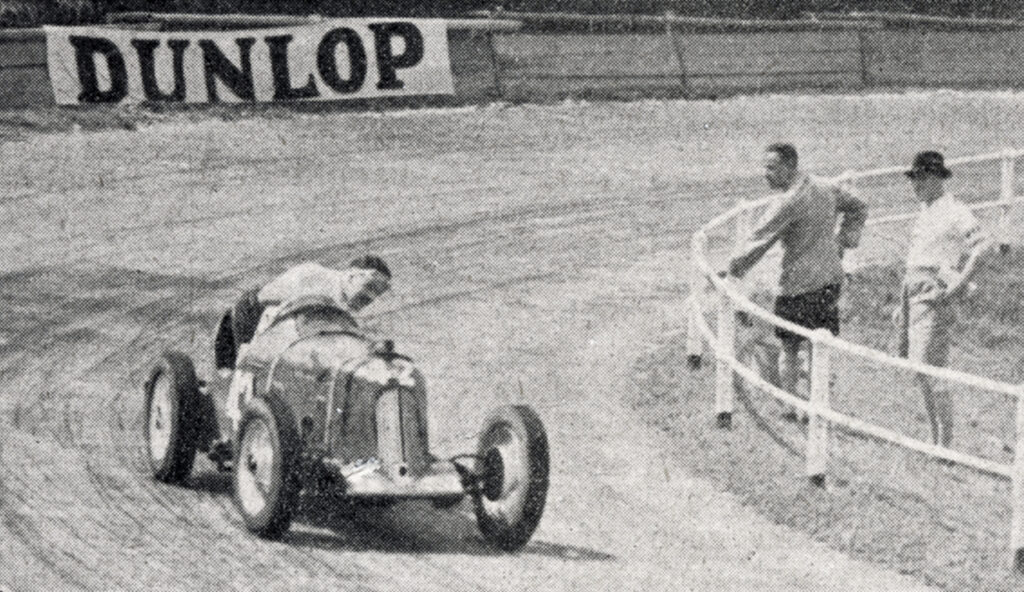
Peter Braid’s L.A.-MG Monoposto, the first single-seater to race at the Gap Hill Climb. Braid was stationed in Singapore as part of the Hong Kong & Singapore Royal Artillery (Singapore Garrison). He and his wife Margaret were active members of the AAM before the war.
There were many other rare and interesting cars entered, notably a new Ford Mercury V8 Drophead; a supercharged Austin Seven from Penang, the smallest car entered; a 1,775cc SS Jaguar; a Singer Le Mans, entered by one of the sons of the owners of car importer Cycle & Carriage; a 328 Frazer Nash-BMW; and the usual MG PAs and TAs.
The hill climb course still favoured the motorcycles when it came to setting faster times. Best time set in 1939 was by a Triumph in 42.8 seconds compared to Lim Peng Han’s Number 2 Ford V-8 L.A. Special, which blitzed the course in 44.8 seconds.
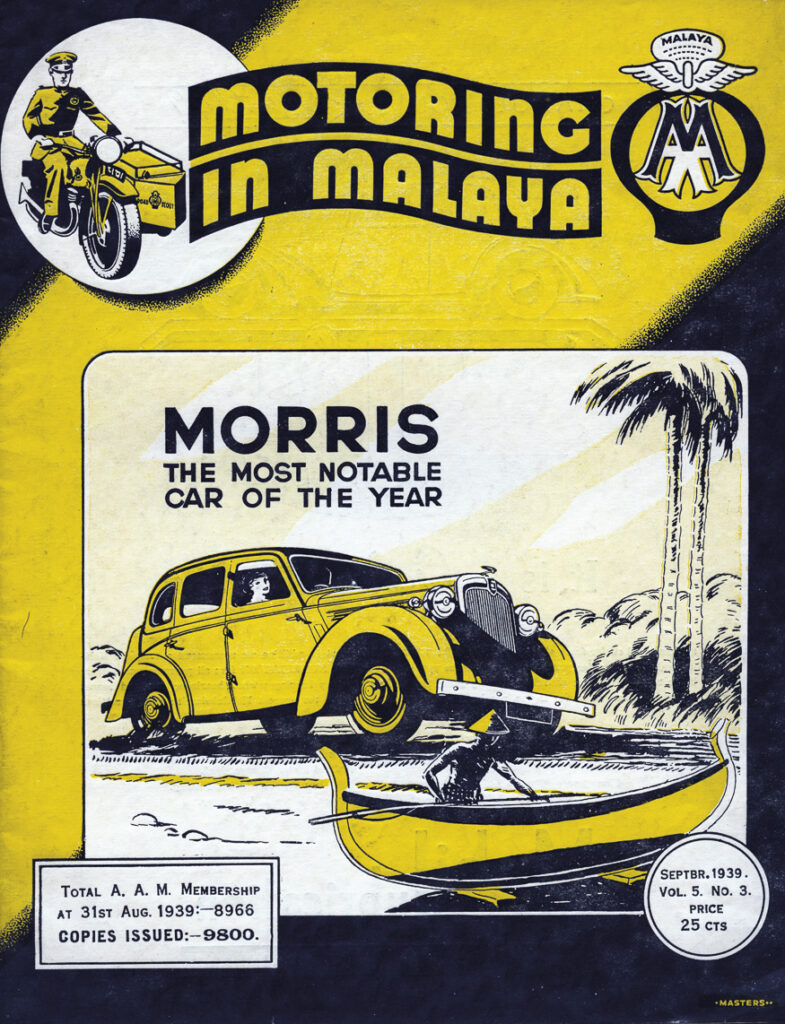
This September 1939 Automobile Association of Malaya publication was discovered in a little provision shop during a trip to Malacca in the late 1980s.
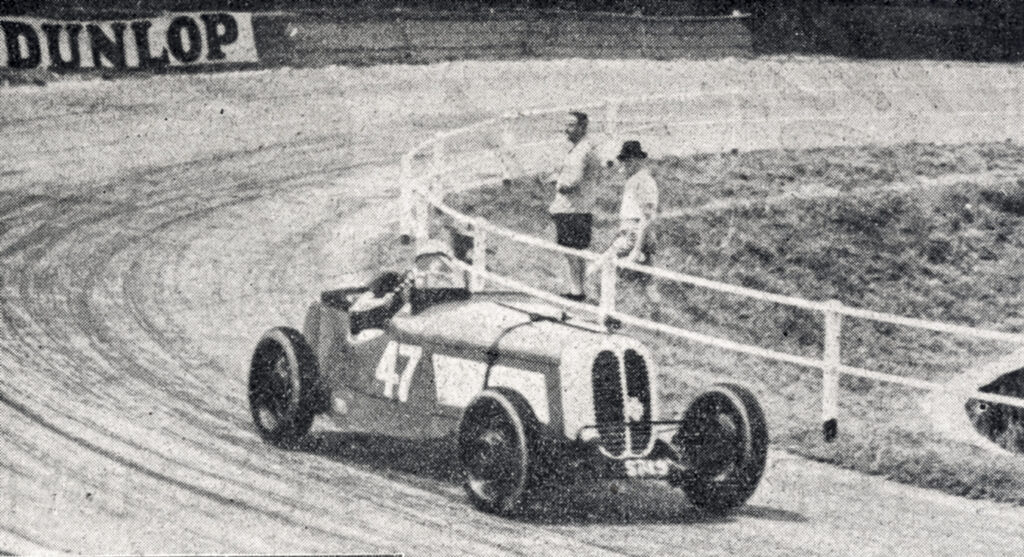
Lim Peng Han wrestles one of his first Specials around the Gap in 1939. His workshop, Lim Automobiles, built numerous such specials over the years, providing enthusiasts with the opportunity of running Grand Prix-looking cars at events throughout Malaysia and Singapore.
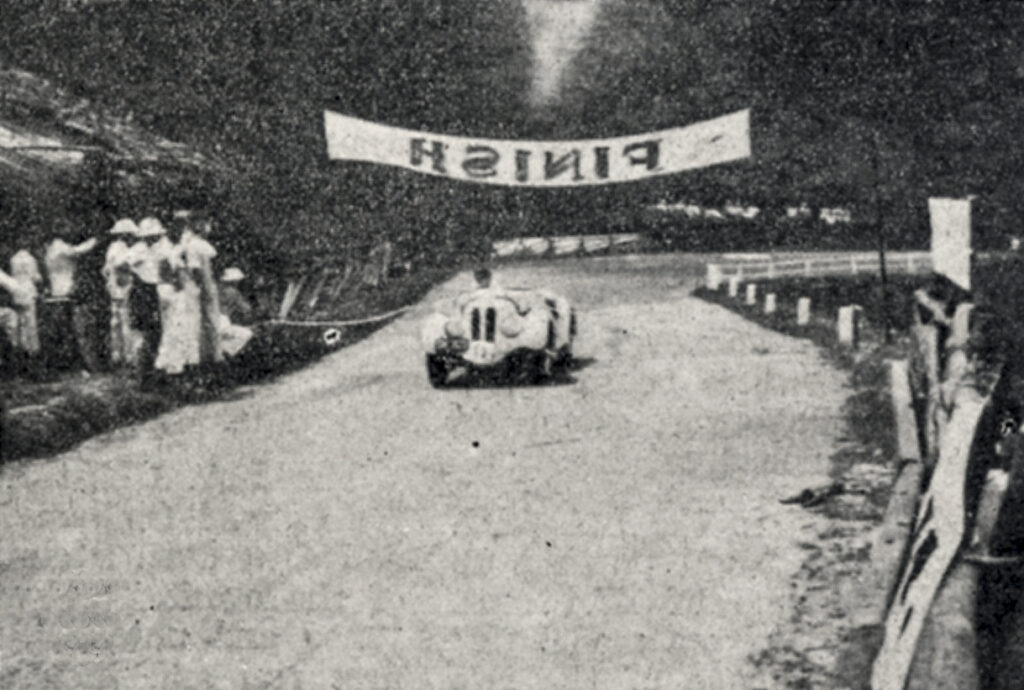
A rare treat in Southeast Asia was this Frazer Nash-BMW in action at the Gap Hill Climb of 1939, in the hands of Wong Chek Quee. You’ll find more about this car in Peng Han & the Frazer Nash-BMW
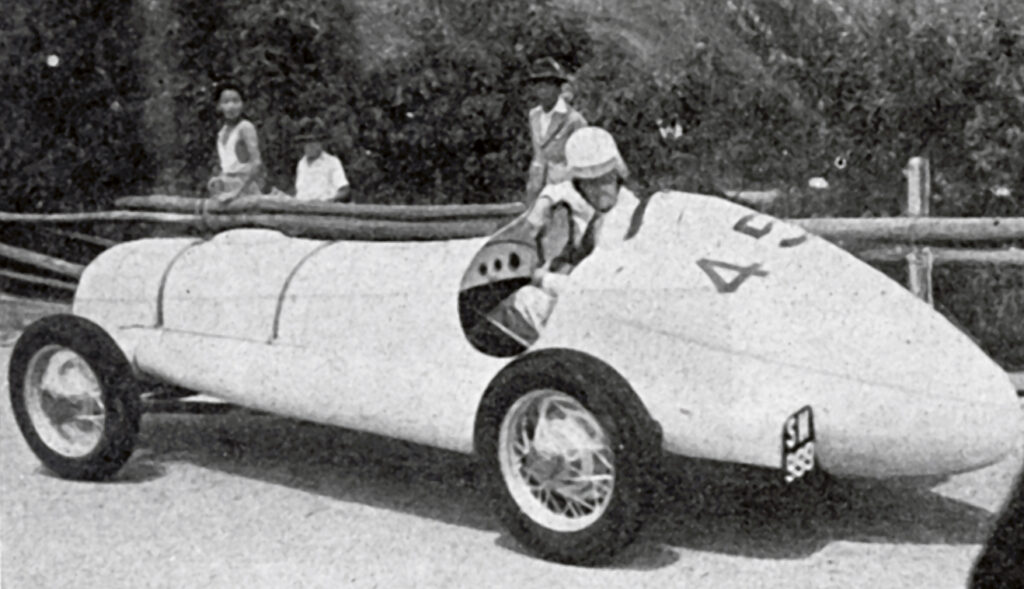
Judge Conrad Oldham finished the course backwards on his second run. His L.A. Ghost was delivered to the circuit at 8am on the day of the event, untuned and untested.
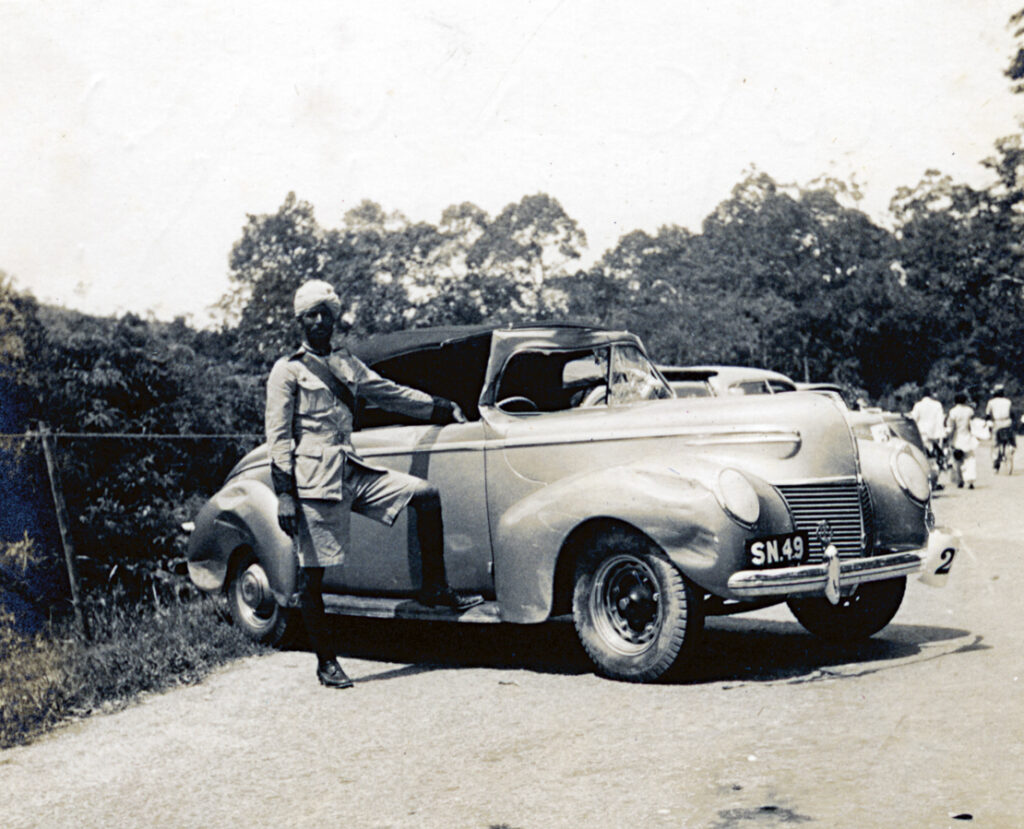
George “Geno” Oehlers had a hair-raising encounter at the final hairpin in his new Ford Mercury V8. The car plucked a long scaffold pole from the fencing and carried it over the finish line, complete with damaged windscreen.
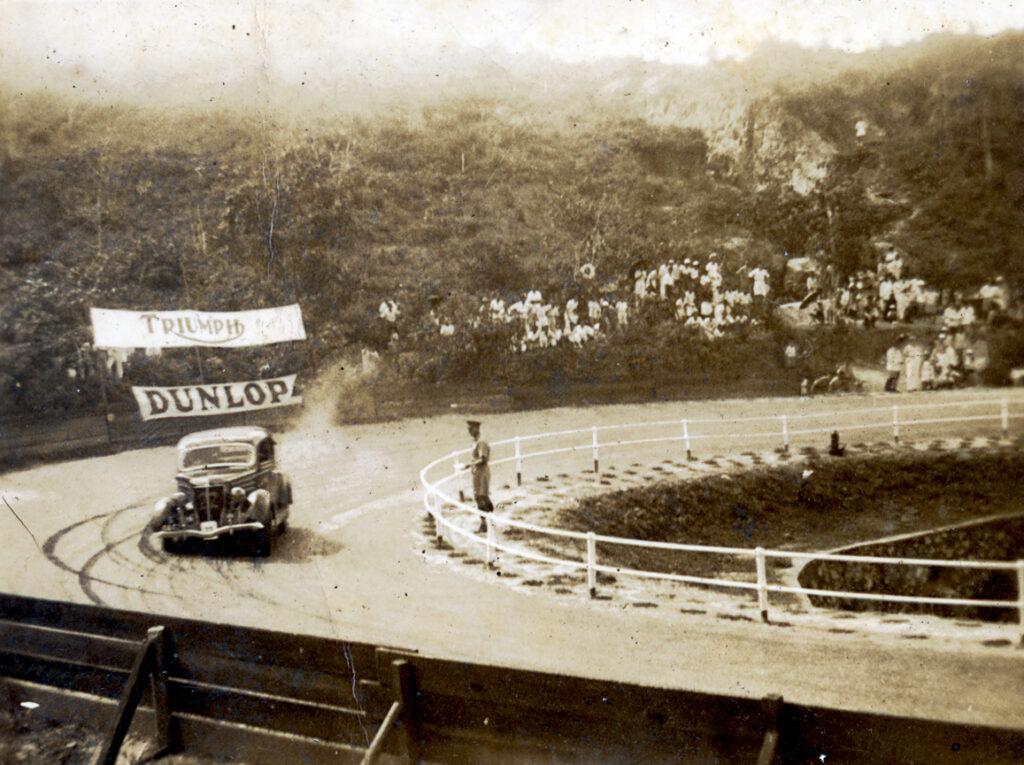
Jimmy Milne’s Ford Tourer understeers around the final hairpin on his way to winning Class 5 (cars to 1500cc).
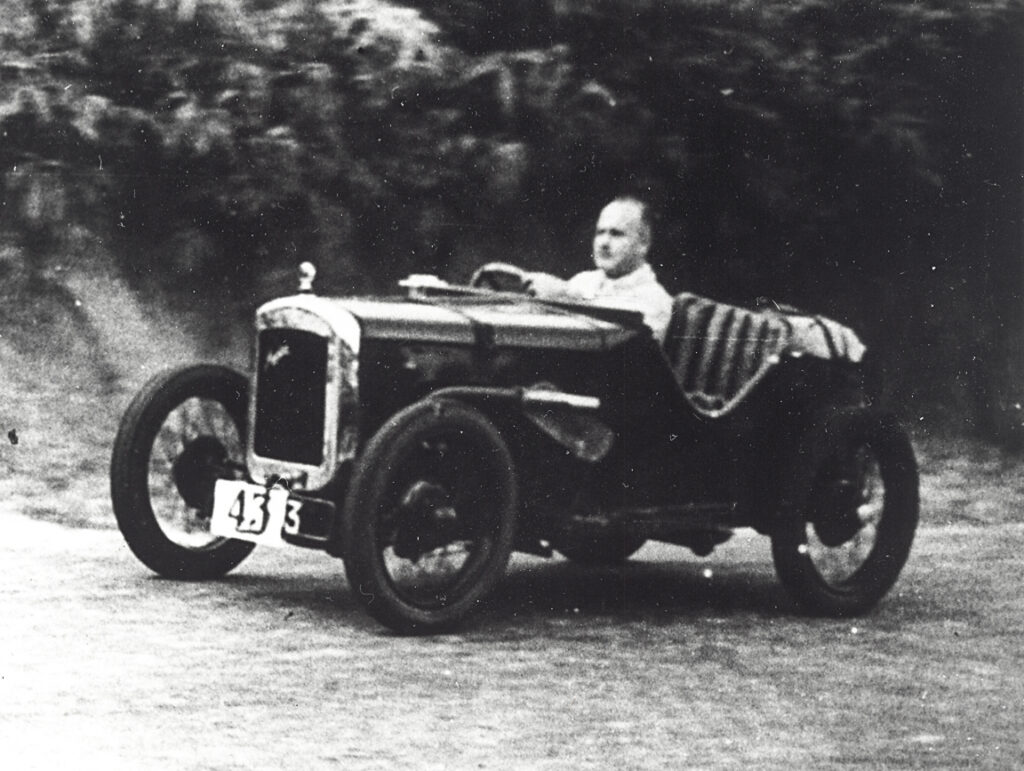
Neville George “Red” Reddish’s supercharged Austin 7 Ulster was the smallest car at the Gap yet managed to take third place in the “Oldham Cup” Fastest Car race, behind Lim Peng Han and Peter Braid.
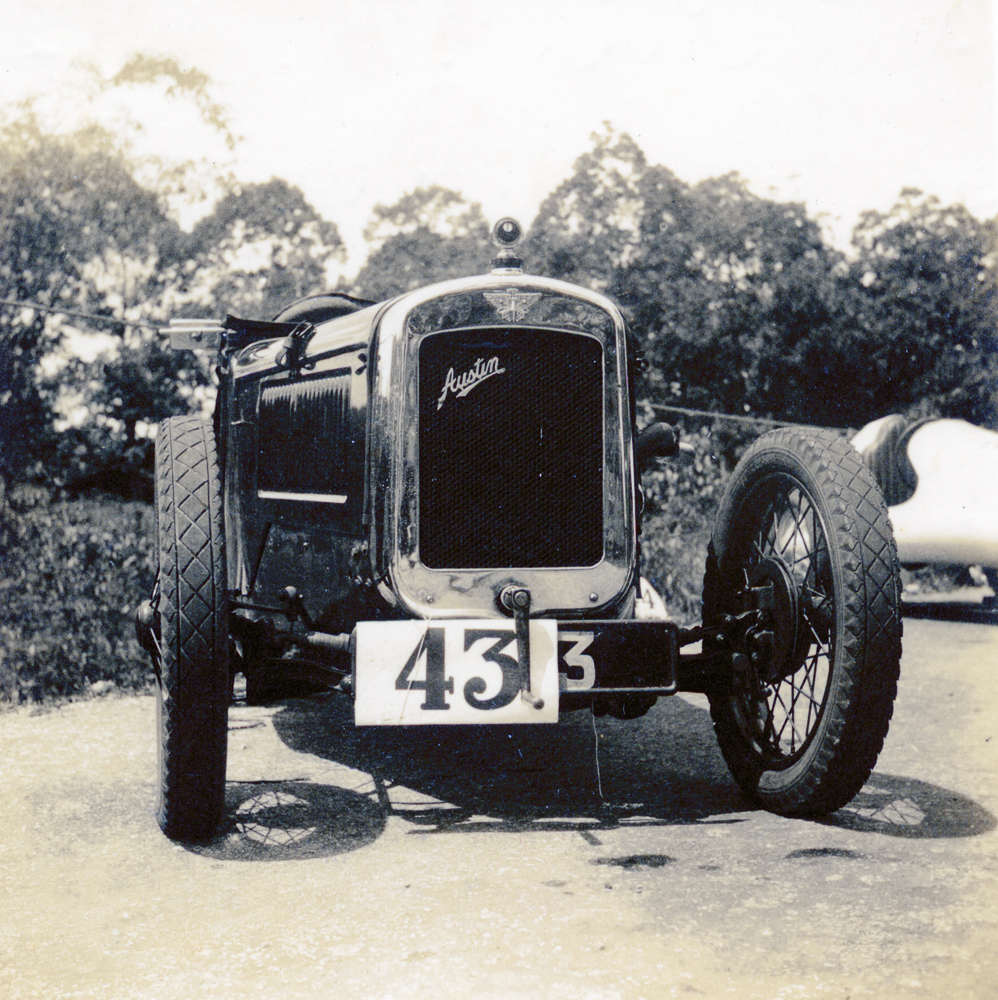
Reddish’s supercharged Austin 7 Ulster was the smallest car at the Gap yet managed to take third place in the ‘Oldham Cup’ Fastest Car race.
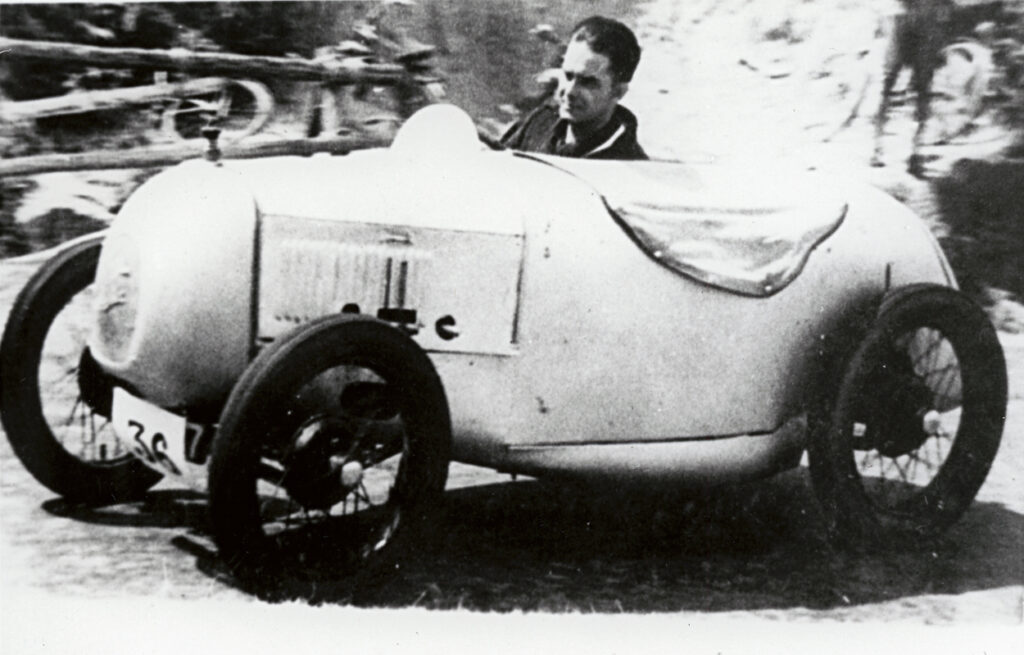
Roy Newman from Seremban modified and tuned his old Austin 7 to good effect against bigger and sportier cars.
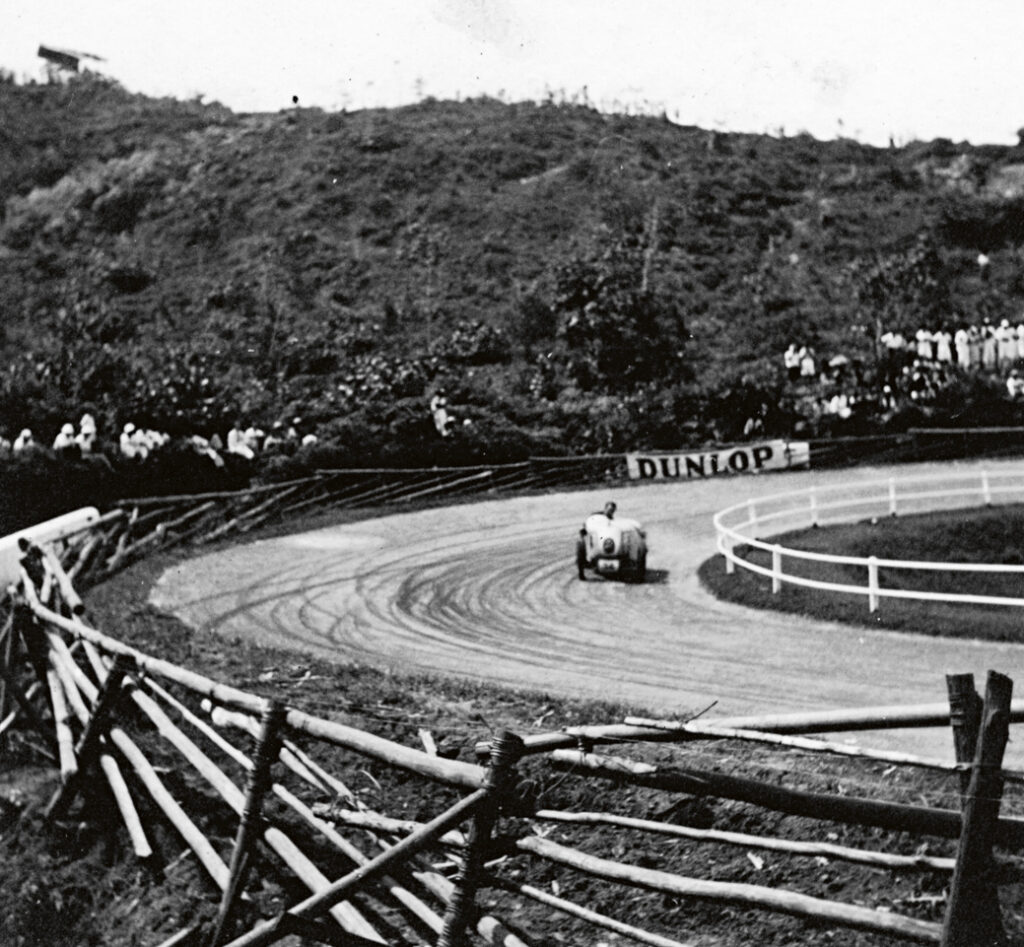
Roy Newman’s Austin Seven takes the hairpin at the 1939 Gap Hill Climb.
LAST GASP
The following year turned out to be the last Gap held before the Japanese invasion of Malaya. The more subdued August 1940 event was the fifth running of this very popular event and had an entry list of 60 cars which included a Type 37C Bugatti sports car (first raced at the 1928 Selangor Speed Trial) that was lent to Paul Gibbs Pancheri, newly arrived in Singapore, by Lim Peng Han. Gibbs Pancheri promptly declared the Bugatti a “very exciting car to drive.”
We know from the Gap Hill Climb’s 1940 program that tiffin could be purchased at the salubrious surroundings on the 500-foot peak at the Mulder Gap Road House hostel for just $1.50. The Gap House was situated a short distance to the left of the Finish line. Interestingly, after the war, the area around the Finish line was affectionately referred to by some as Pancheri Peak.
It was a heady period in Malayan motor sports in 1940, with hill climbs in Penang at Mount Pleasure on 9 February, Gopeng on 24 March, the Seremban Half-Mile Sprint on 12 May, and the Gap on 4 August. The year culminated with the Johore Grand Prix in November (see GENESIS & THE WINDS OF WAR).
By the time the Gap Hill Climb was run, the established racers had their mounts sorted out. There were numerous additions to crop of enthusiasts as Britain boosted her compliment of personnel stationed in Malaya and Singapore in anticipation of military action.
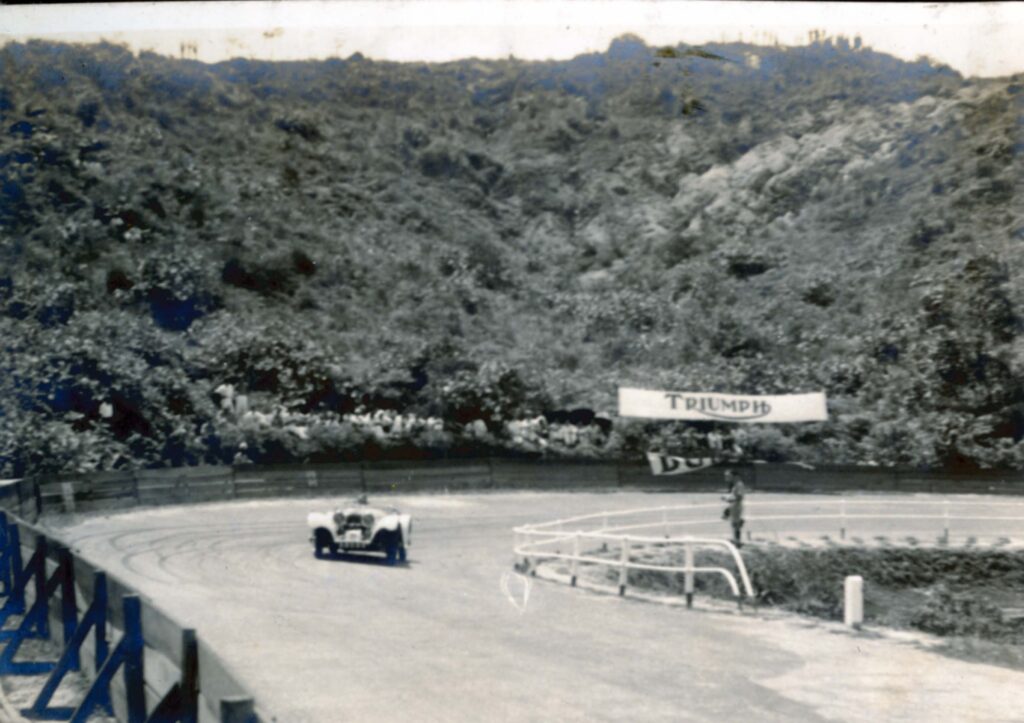
John Barraclough’s Jaguar SS100 at the First Bend during the 1940 Gap Hill Climb. The car won the Sports Cars class and set the third fastest time of the day!
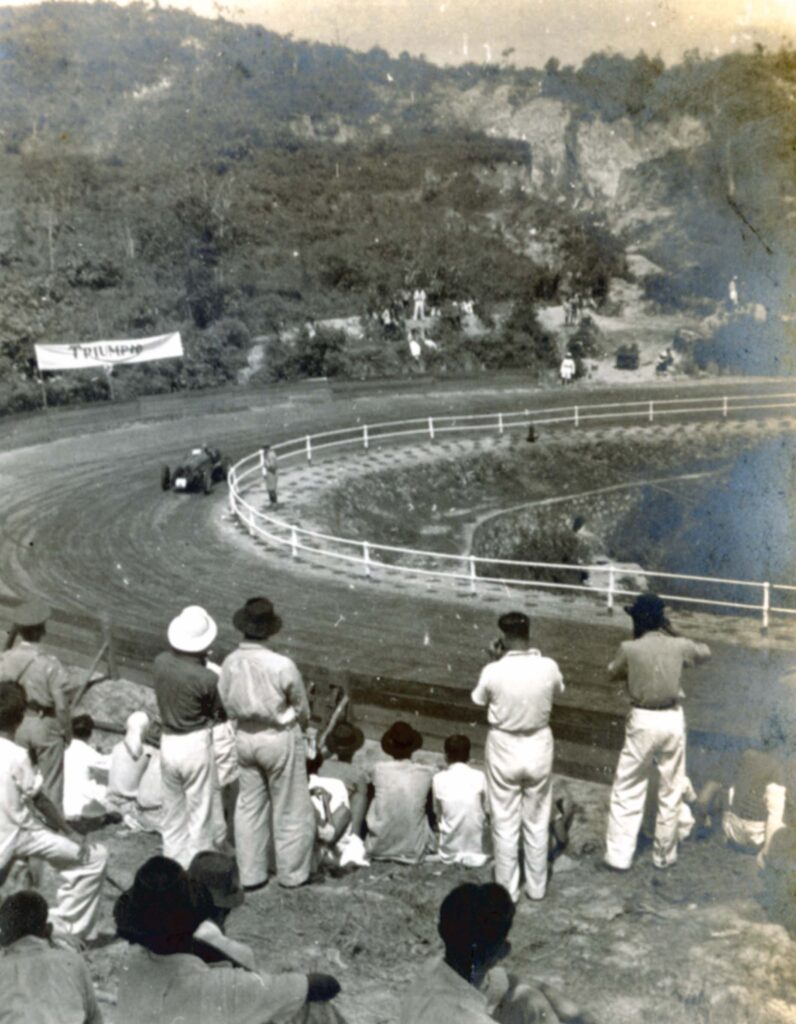
Very few images of C.O. Jennings’ MG K3 Magnette racing in Singapore and Malaysia exist. This one is of the car at the 1940 Gap, complete with bodywork. “Disappointingly slow…” read the caption, but that was probably its first time out at the Gap.
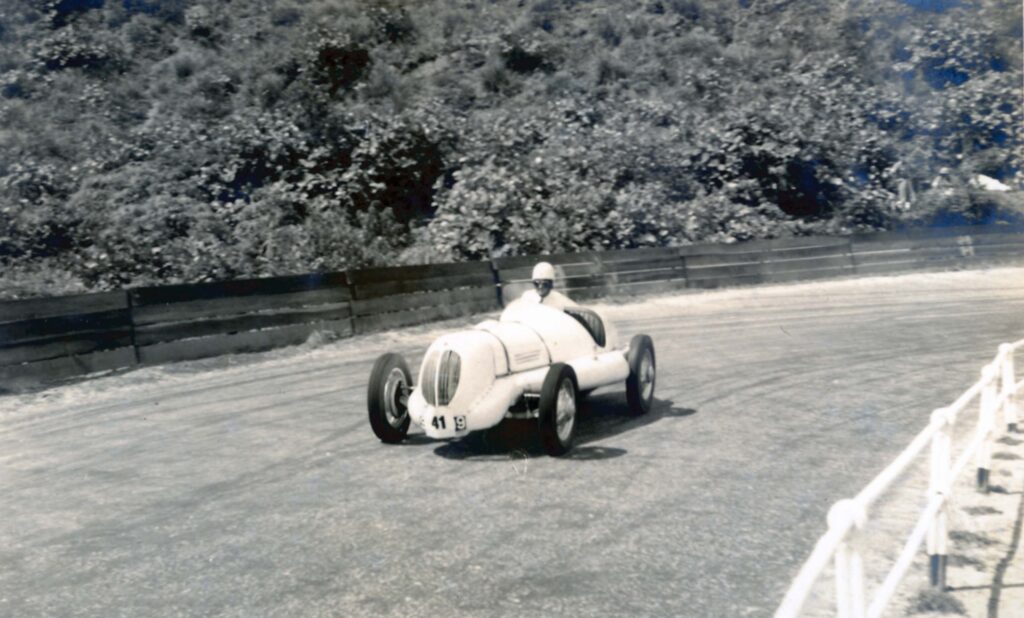
Conrad Oldham’s L.A. Ghost at the First Bend of the Gap in 1940. The car was called a “monstrosity” by some.
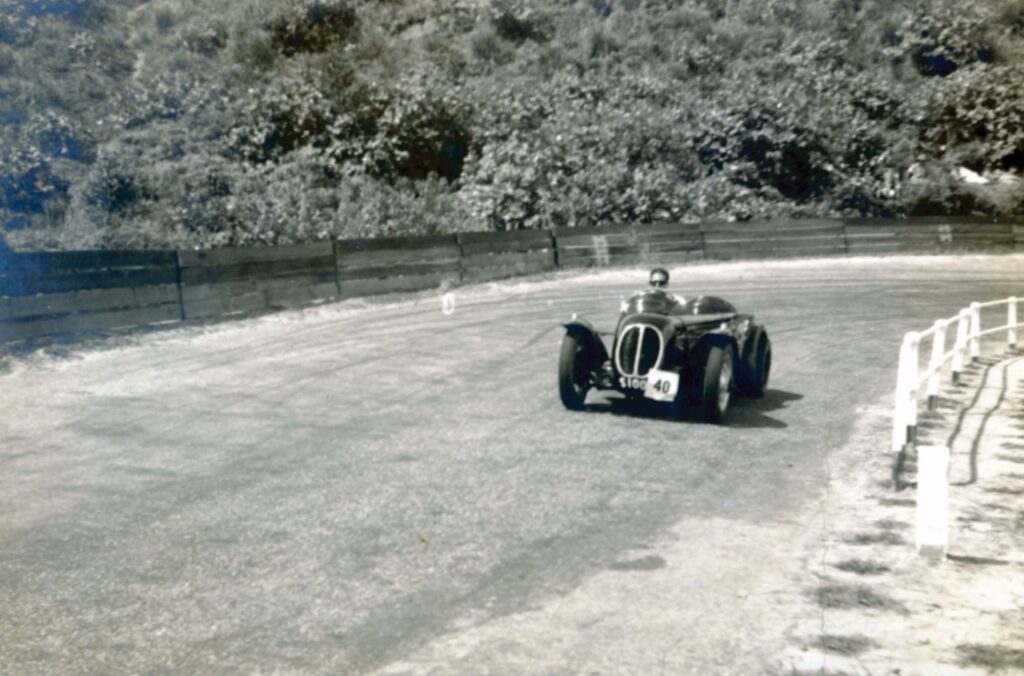
Ted Holloway’s 3600cc Holloway Special at the First Bend during the 1940 Gap. The car ran road registration S100 and on closer inspection, appears to have twin piston shocks at the front.
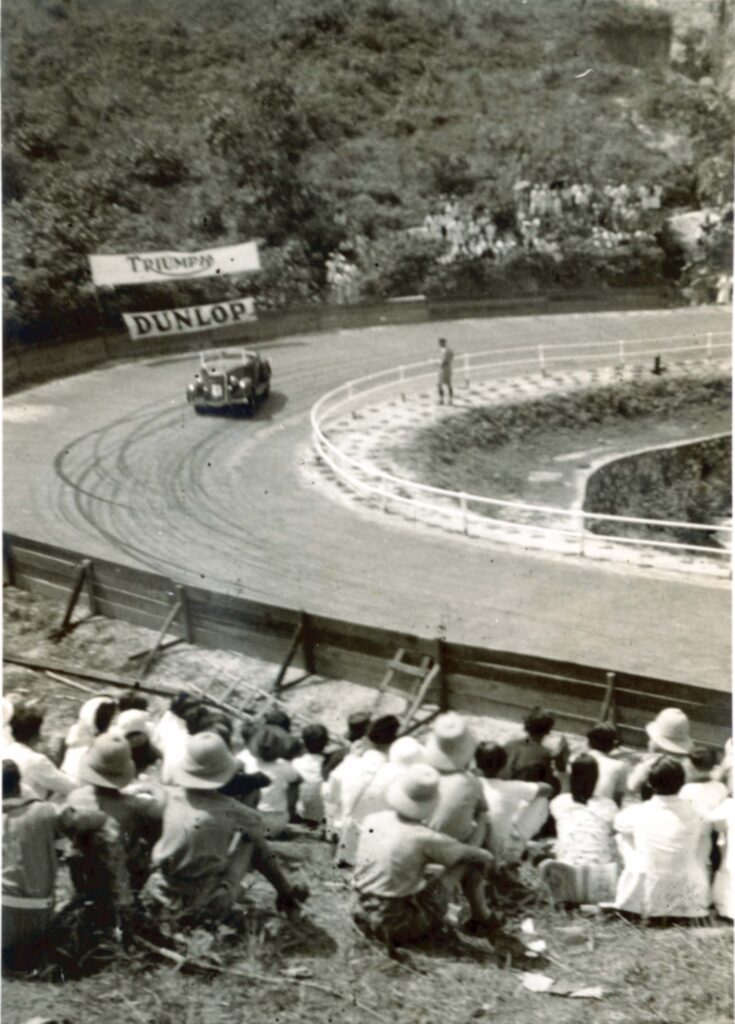
Lt. Peter Jermyn R.A., another of the AAM’s committee members participating at the Gap in 1940. On this occasion he was entered in his Ford V8. He Finished 2nd in the Tourning Class, 0.3 sec behind Lim Peng Han’s saloon.
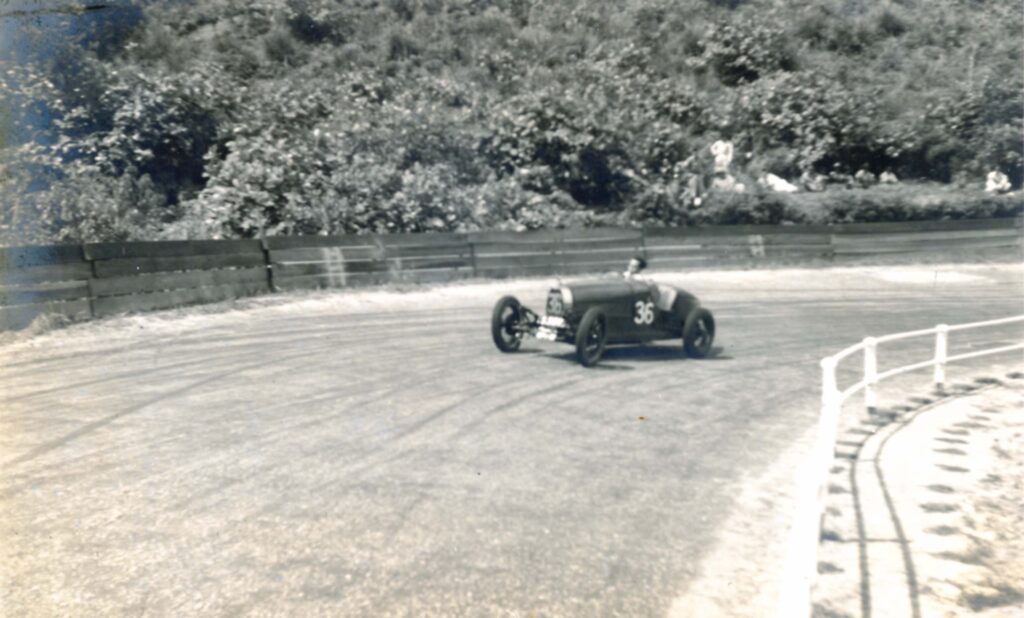
Another of those very rare photos of a car in action in South East Asia. In this instance, Lim Peng Han tackles the 1940 Gap in the Type 37 Bugatti. 1940 was the third successive year he won at the Gap. Further information on this Bugatti can be found in:
https://rewind-media.com/2023/10/28/automotive-archaeology-the-bugatti-mg-special/
Lim Peng Han, now known for his skill in creating Specials, had a new LA Special (registration S5110), a car that was said to have been build up “on MG lines out of mainly Fiat parts with a 3,620cc Ford V8 engine.” I call it Number 2 because Number 1 had been sold to Ft-Lt Anthony Dockray Phillips11.
Phillips, running old Number 1, had already set a new Malayan record for ½ mile sprints at the Seremban Half-Mile Sprint on 12 May 1940. Lim was experimenting with Arnott supercharging and Number 2 carried a new nose cone with two round, and rather ghastly looking apertures. But it worked because Number 2 set FTD and a new record at the Gap Hill Climb in August 1940 while Number 1 was run by Fl-Lt Arthur Loughborough12, this time with body stripped down.
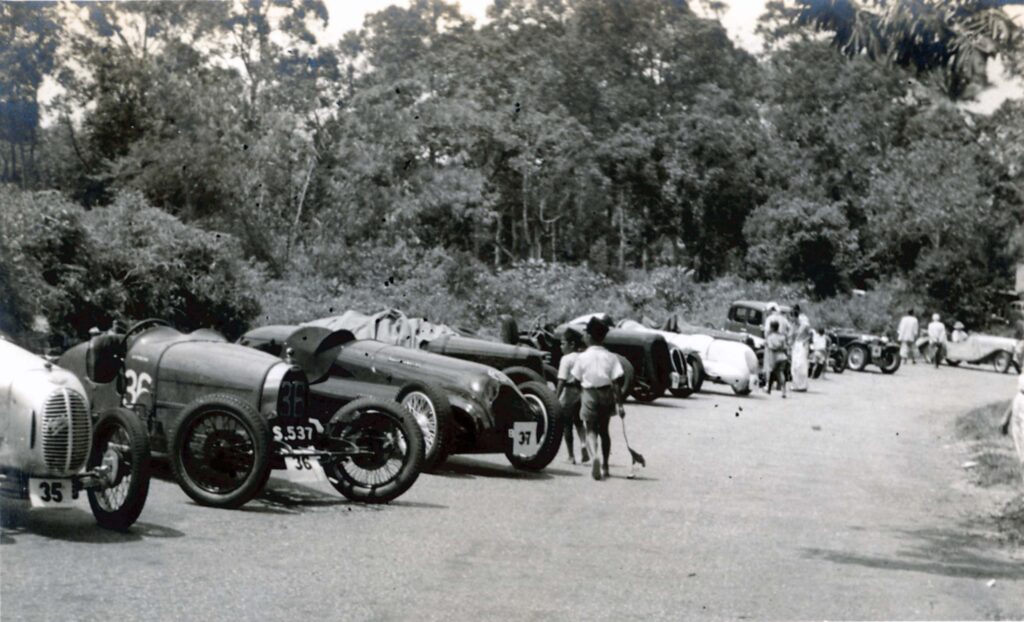
Line up at the 1940 Gap Hill Climb – Austin Seven Special (Geoffrey Richard Gwynydd Maund); Bugatti Type 37 (Lim Peng Han), MG K3 (Mick Jennings), LA Special (Peter Braid), Chevremban (Neville Reddish), Holloway Ford V8 Special (Ted Holloway), LA V8 Ghost (Conrad Oldham), “Works” LA (Anthony Phillips & Peng Han)…what a selection.
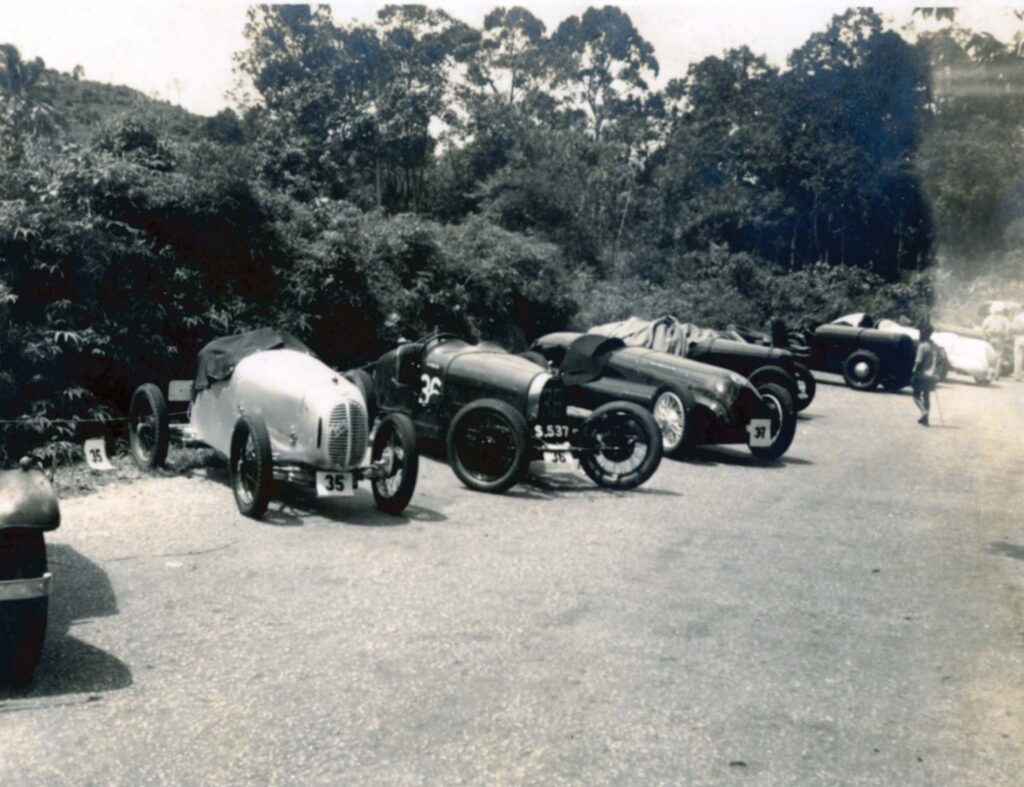
At the 1940 Gap Hill Climb with the Type 37 Bugatti alongside the K3 MG.
END OF PART 2
PART 3
RETURNING TO THE GAP
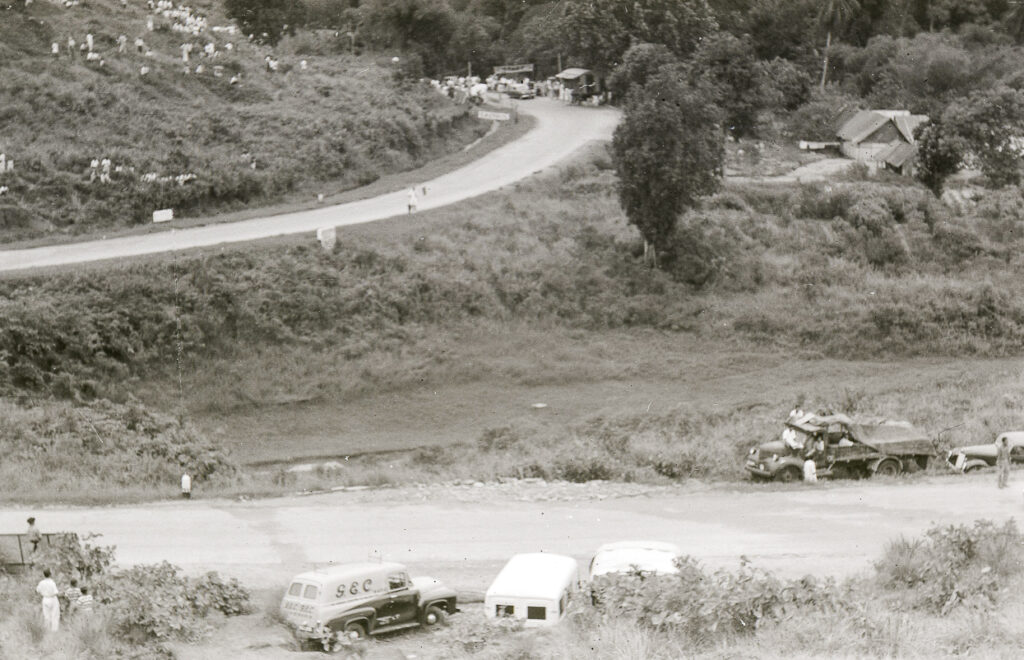
A section of the Gap Hill Climb in the mid-1950s showing the start at the top of the photo.
Post-war racing in Singapore resumed shortly after the formation of the Singapore Motor Club in February 1948 with a hill climb at Bukit Batok, off Upper Bukit Timah Road, on 25 April the same year (See CLUBBING IN SOUTH EAST ASIA ). This however, was not the first speed event in Malaya. That accolade goes to the Ipoh Motorcycle Club and its 350 yard Gopeng Speed Trial (for cars and motorcycles) on 4 July 1948!
It was not long before the annual Gap event was resurrected but this didn’t happen until events had been run at Bukit Batok, Pender Road, Lim Chu Kang (a sprint), a mass start event at Kallang Airport (21 August 1949) and the Johore Grand Prix (2 October 1949 – See HISTORY OF THE JOHORE GRAND PRIX – Part 1: 1949-1953).
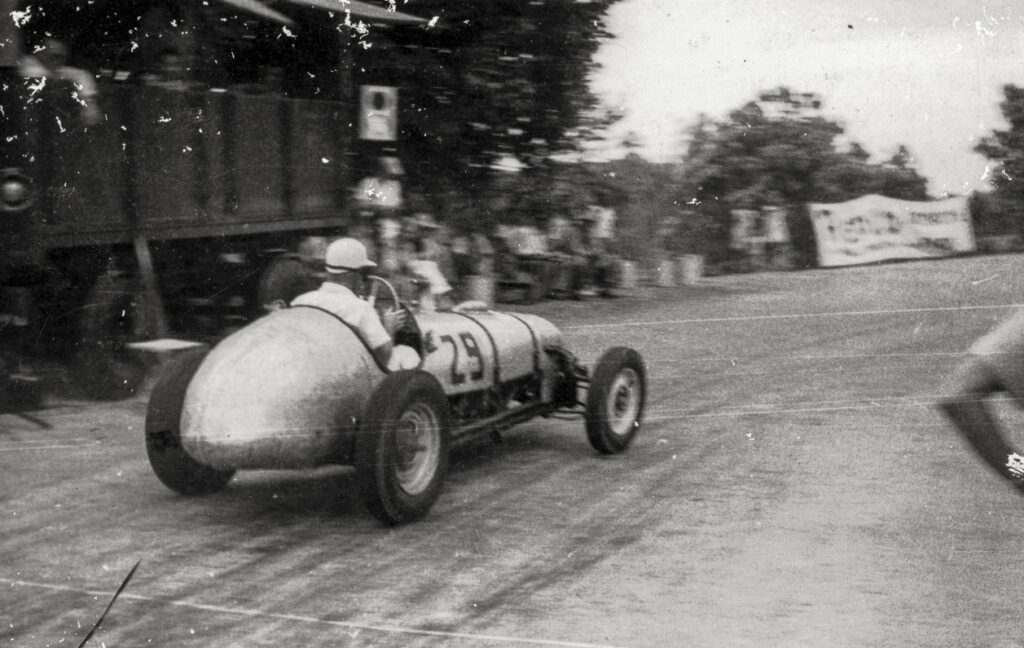
The Moncrieff-Kendall Ford V Special, better known to us as the Kudensay Special, starts its run up the Gap.
In fact, motor sports in Malaya had taken off in a big way by the time the first post-war Gap Hill Climb was held on 27 May 195113.
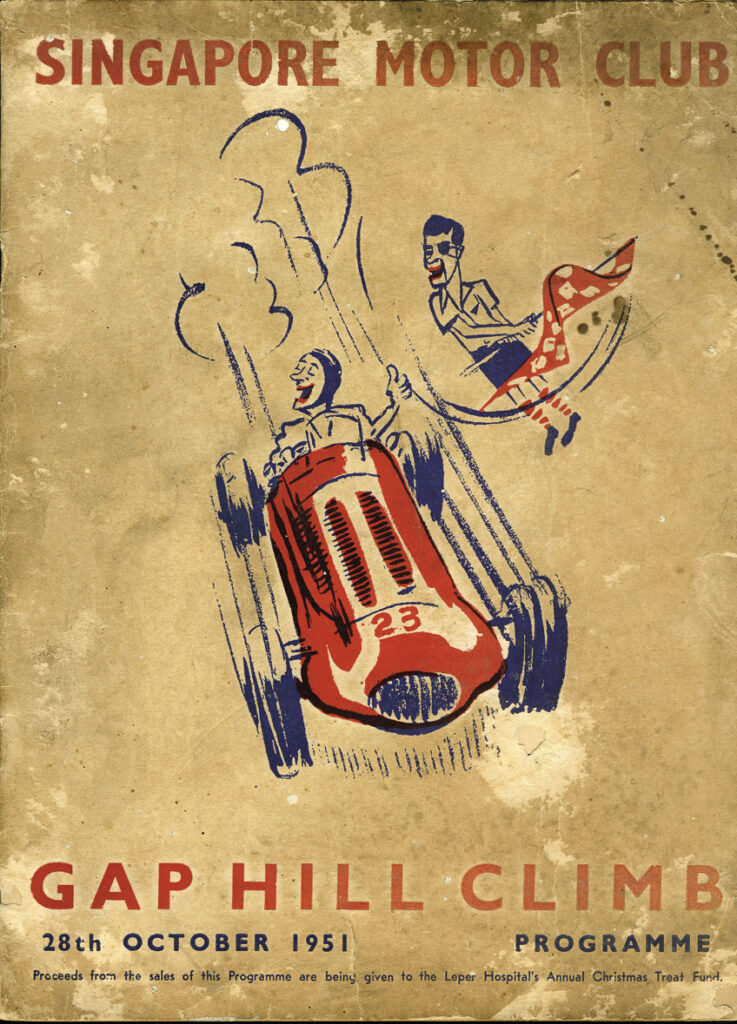
Program cover from the second post-war Gap Hill Climb. The event was organised by the Singapore Motor Club. The Starter illustrated appears to be the Motor Club President, Paul Gibbs Pancheri.
FILLING THE GAP
By 1951, the Singapore Motor Club were the primary organisers of motor sports events on the island and the Gap Hill Climb soon became its premier event. Those who had participated in the pre-war Gap, knew it would be a popular event – not just amongst the residents but with upcountry entrants as well. And so it was, with Bill Ferguson14, Mick and Ruth Jennings, Saw Kim Thiat, Jimmy Robson (all were late entries) etc. arriving from Perak and Selangor to participate.
The locals too were hard at it, the additional couple of weeks sufficient from Lim Peng Han to make a go at building a new L.A. Special for himself, replacing his supercharged 1.1-litre Fiat L.A. Special with a Ford V8 Special (which took 16 hours’ labour and four assistants to cobble together). And there was a good reason for the rush to build a bigger and better car. Lim was gunning for the treble FTD – having already set FTD at the 1939 and 1940 Gap events.
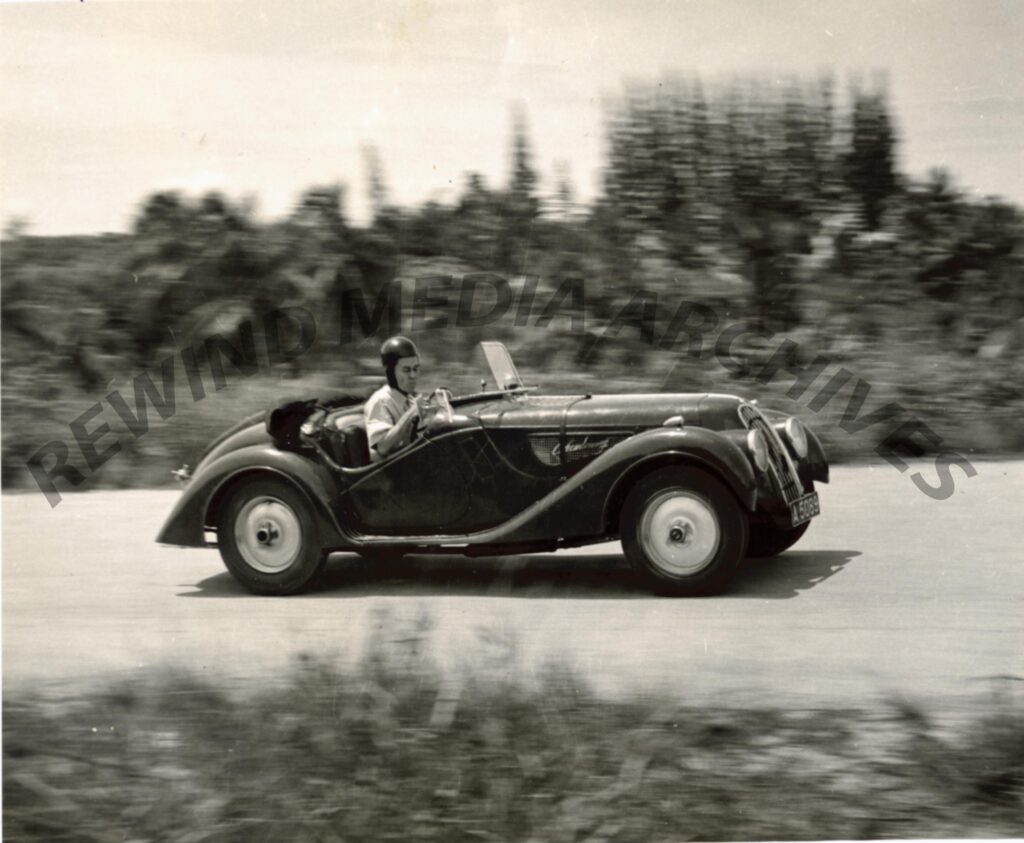
A most interesting image of Lim Peng Han at speed in the Frazer Nash-BMW 328, 28 October 1951 at the Gap Hill Climb in Singapore. Can the classic car experts identify the badge on the bonnet vents?
There were around ten locally built Specials entered for the inaugural Singapore Motor Club Gap Hill Climb. Add to this a pair of XK120 Jaguars, a Frazer Nash-BMW, a Singer Le Mans, and a gaggle of MGs (a J2 and several TCs and TDs) and you had a fairly good turnout for the Sports and Racing Cars classes. Least we forget, this event was also saw Bill Ferguson tow his Cooper-JAP down from Ipoh.
That wasn’t to say that the Saloon and Tourers were lacking in variety. Jowett, Citroen, Sunbeam Talbots, Renaults, Morris, Rileys, Fiats and Skoda were represented. A.J.S., Triumphs, Nortons, Sunbeams, Douglas and Matchless made up the motorcycle entries. All in all there were 81 entries!
RACING CARS AT THE GAP
The Gap Hill Climb of 5th April 1953 was significant – it was a weekend where the once dominant Specials were finally outclassed!
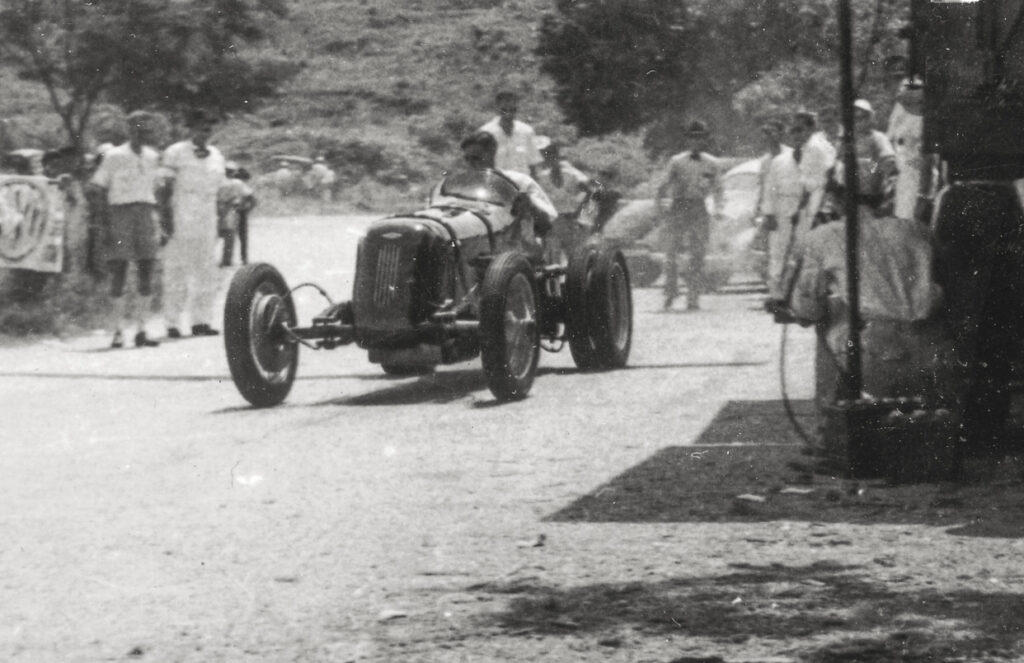
Colonel Peter Vaughan commences his blast up the Gap in April 1953. The Frazer Nash set FTD at 48.20 seconds. For an account of the car’s successes in Malaya, see THE COLONEL, FANE & A FRAZER NASH.
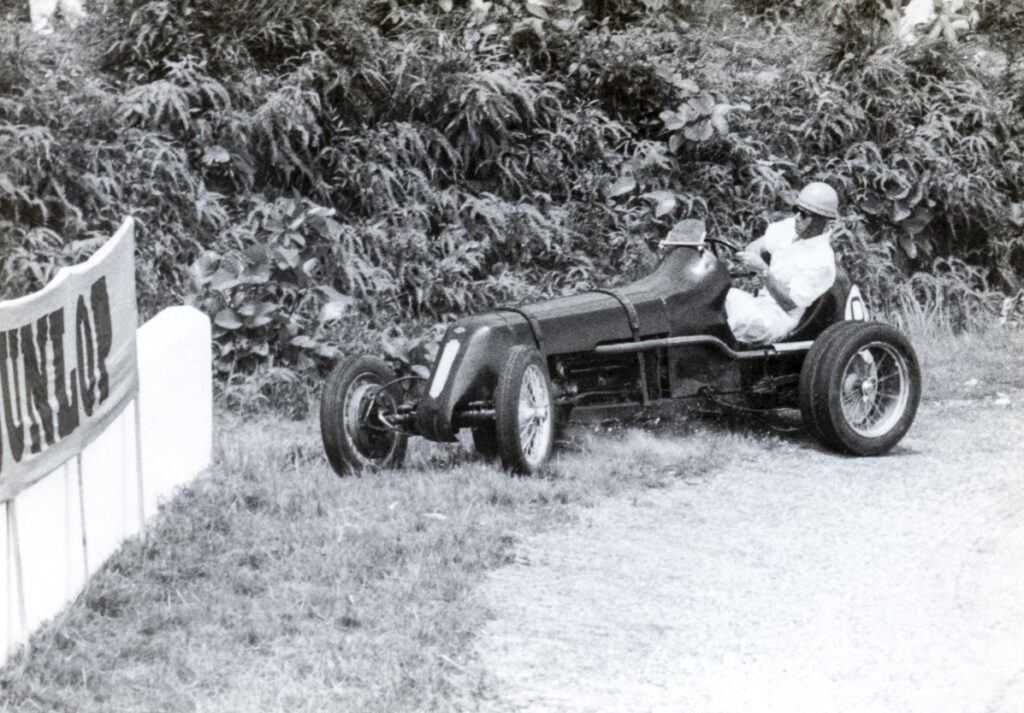
The Frazer Nash on a different line.
Ten times Neil Moncrieff’s 1952 record (49.80 sec., set in his Cooper MkV) was smashed. Lim’s Kieft, Peter Vaughan’s Frazer Nash and Neil Moncrieff’s Cooper all bettered the 1952 time though Ian Jansz was a good three seconds off the pace. Vaughan set FTD at 48.20 sec but the Kieft had made its presence felt with Lim fourth fastest (behind Moncrieff and Jimmy Milne in their shared Cooper MkV) with a 49.35 sec. time.
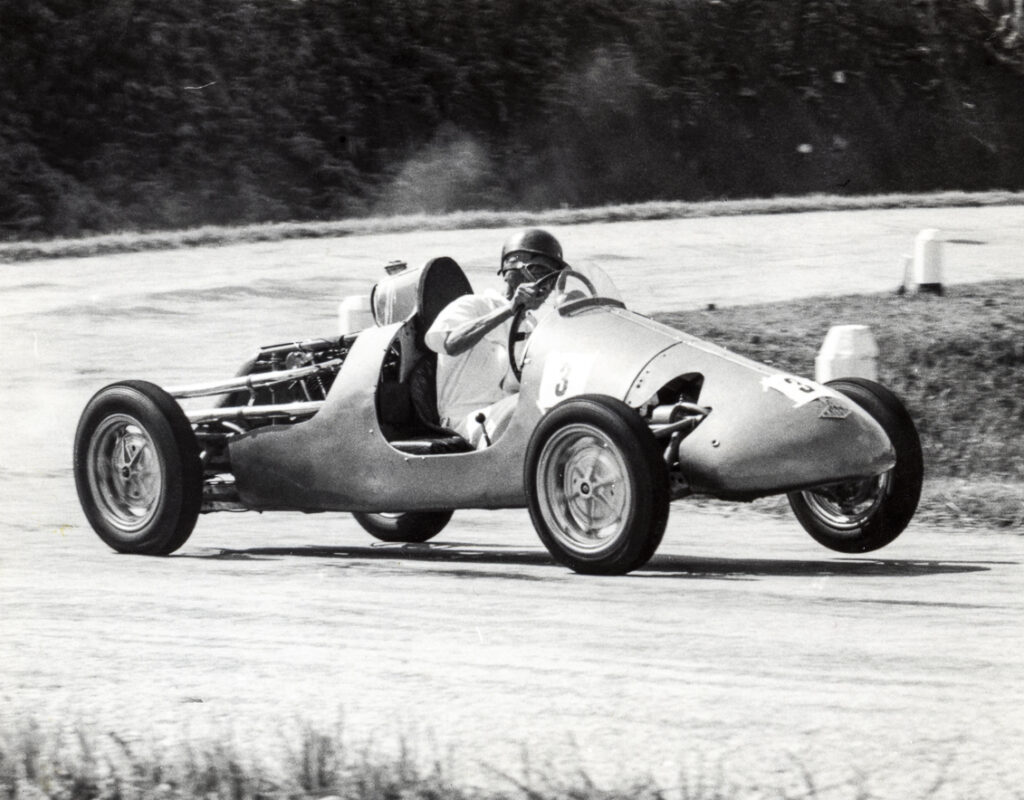
A rare photo of the Kieft Mk1-A (before it morphed into the supercharged Lim Special) in the hands of Lim Peng Han. The first time the Kieft broke cover in Singapore was as the April 1953 Gap.
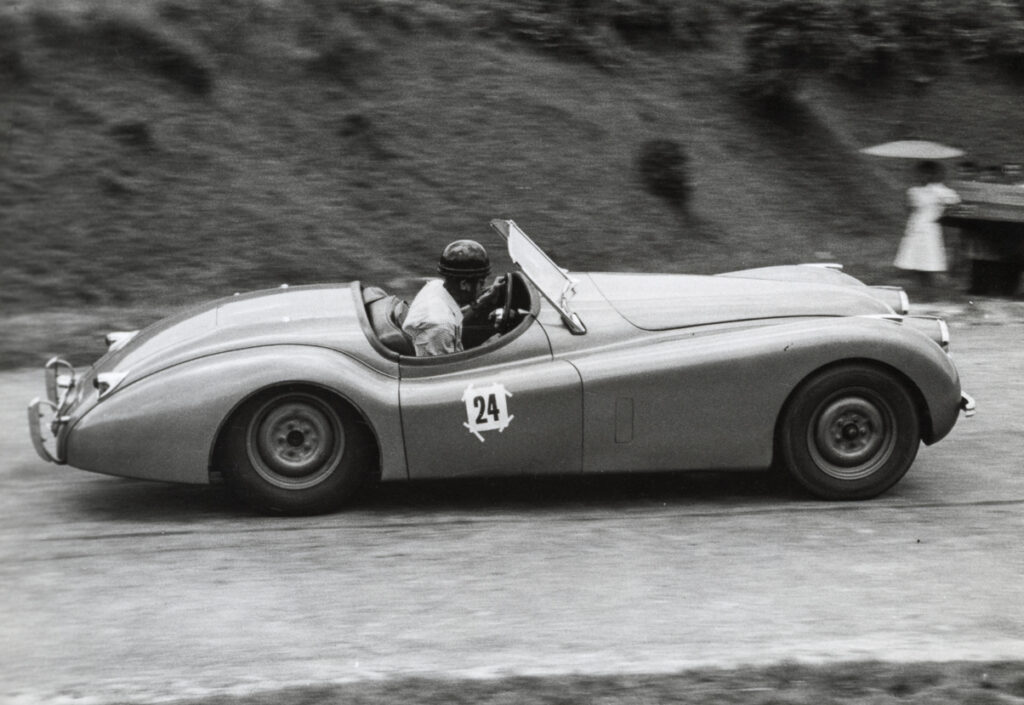
Jaguar XK120s were a common sight at the Gap in the early 1950s.
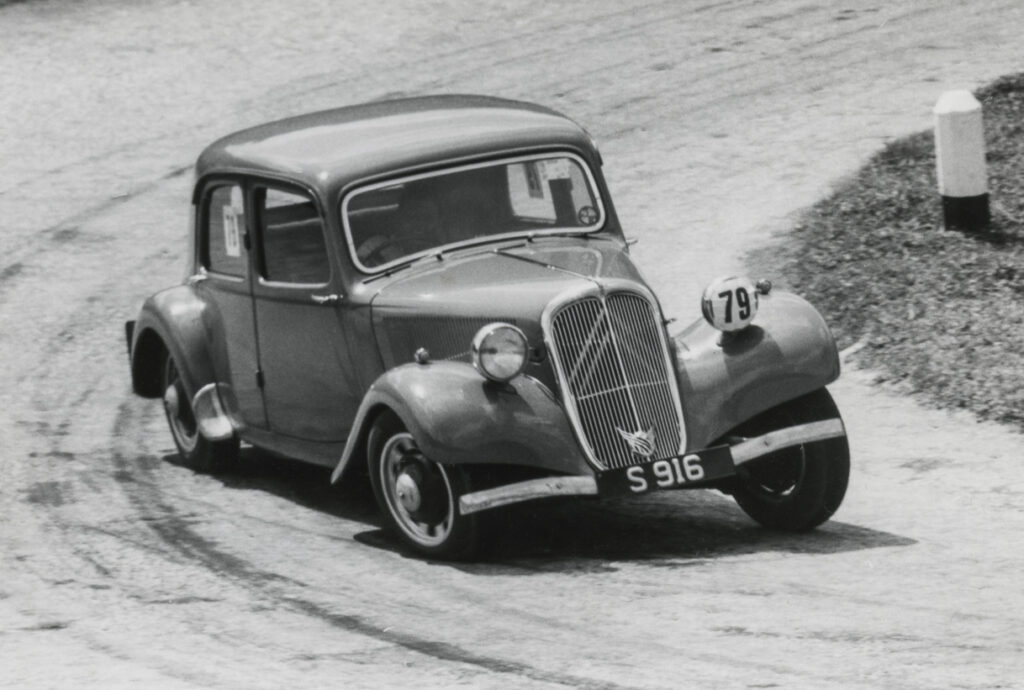
Occasionally one would see a lady entered at club racing events. This Citroen Light Fifteen was raced by Phyllis Saunders. She finished second in her class that weekend.
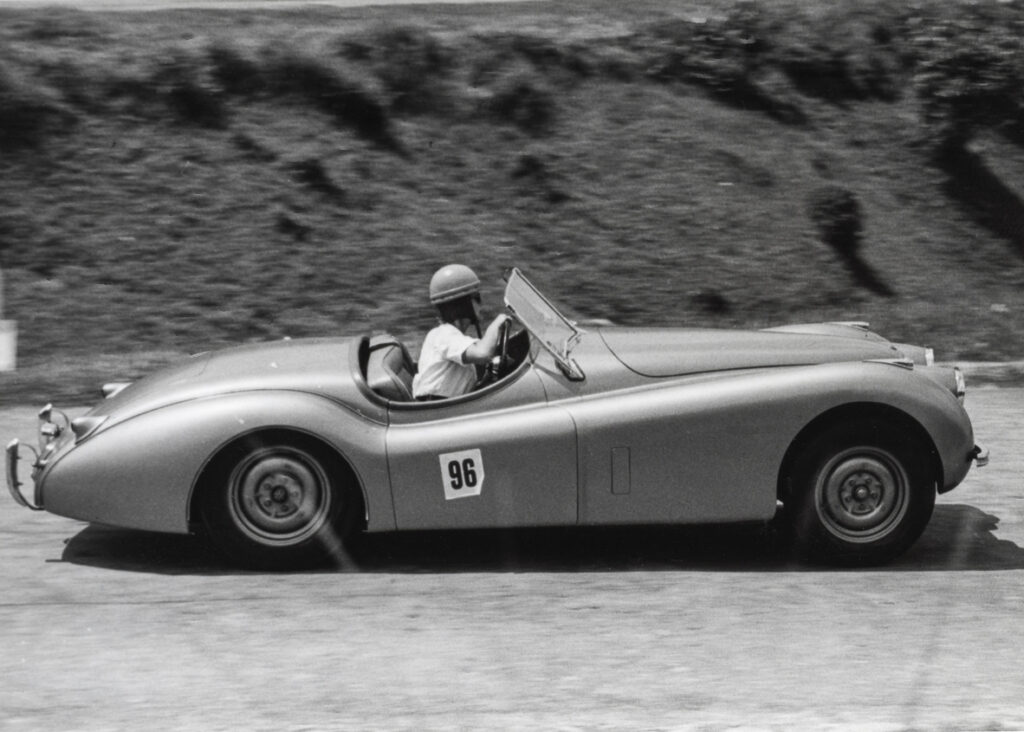
There was more than one female entrant at the 1953 Gap Hill Climb. Car 96 was an XK120 Jaguar belonging French accountant Humbert du Vaure. Isolda Rosamund (wife of David Bertram Pollock, 2nd Viscount Hanworth) had her first run timed at 65.34 sec, fastest of the three women entered that weekend. Her second run resulted in a crash.
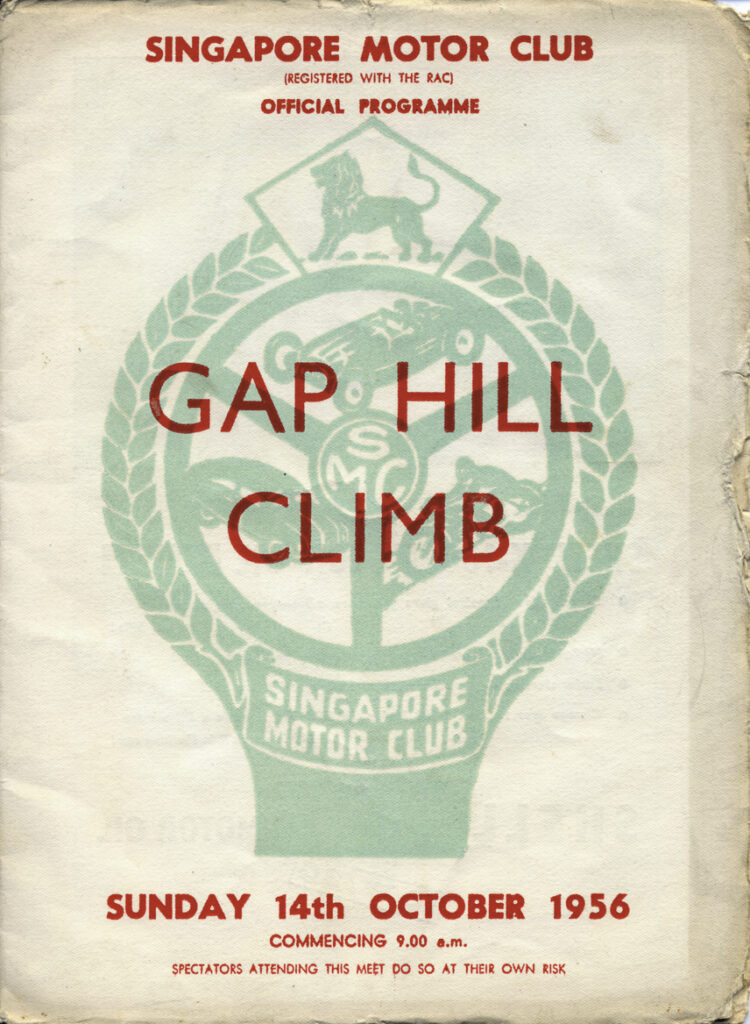
Gone were the lovely illustrations of racing cars of the early 1950s.
GAP EPIDEMIC
By the 1957 Gap, local racer and specials-builder, Lim, now 45, bagged his fourth Fastest Time of Day – surpassing Col. Peter Vaughan (Fane Frazer Nash, Rewind Magazine issue 006 as well as The Colonel, Fane and A Frazer Nash), Neil Moncrieff (Cooper-JAP) and Jimmy Milne (Cooper-JAP) – sealing his reputation as Singapore’s champion racer. Lim’s record came at the 12 May 1957 Gap Hill Climb meeting when he blitzed the hill in the afternoon session to win the Repco Trophy with a time of 48.19 seconds (he did it in the Racing Cars Unlimited event)15. Lim didn’t have it all his way. A snapped chain on the supercharged 1,098cc JAP V-twin meant a trip to town to pick up spares while nursing a case of dysentery. But it all came good in the afternoon with the record run following his main competitor Jimmy Milne’s (in Neil Moncrieff’s Cooper-JAP) trip to the ditch – car and driver were slightly injured. At the same event, the motorcycle FTD was set by Derek E.L. Birch in a 350cc JAP (50.98sec). The May 1957 event was held during the Singapore Flu Epidemic 16
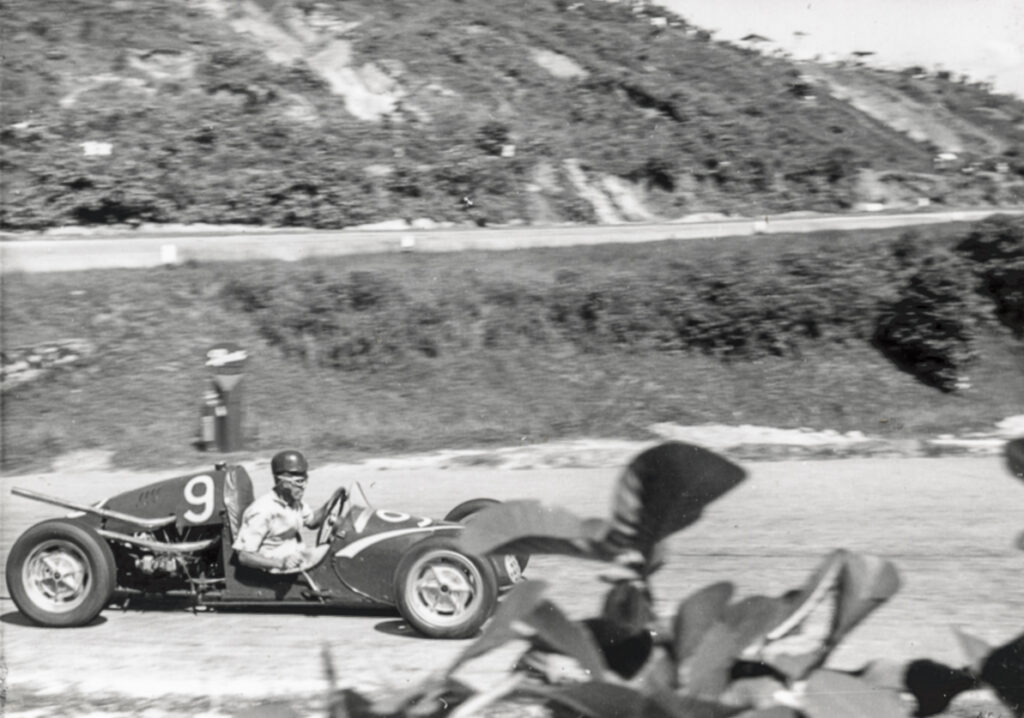
Lim Peng Han and his supercharged 1,098cc JAP V-Twin Lim Special on their way to winning the Repco Trophy at the May 1957 Gap Hill Climb. Lim was stricken by dysentery during the weekend.
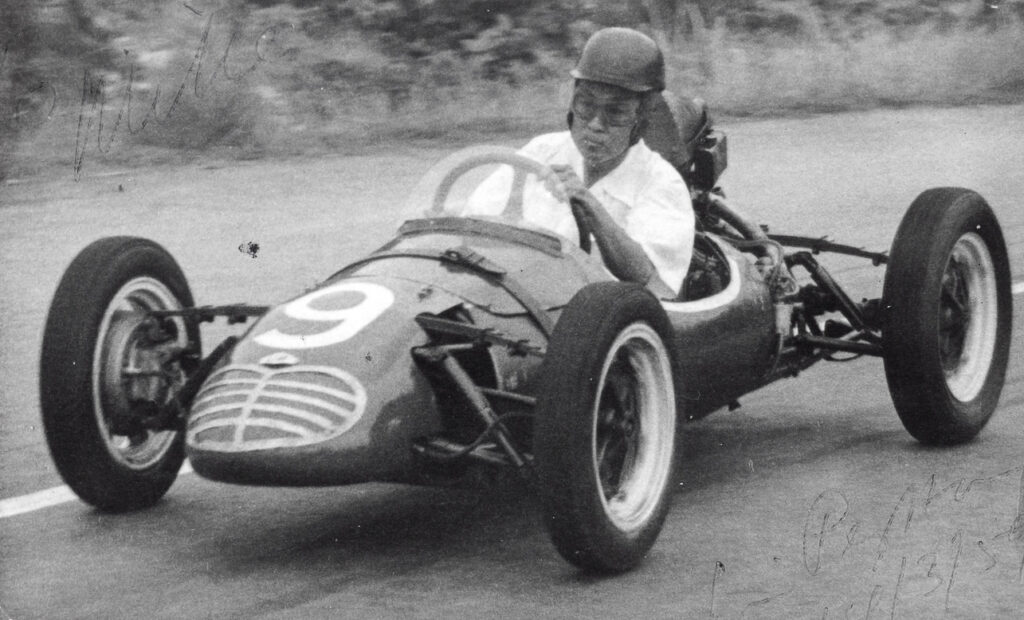
The Lim Special in action at the Gap.
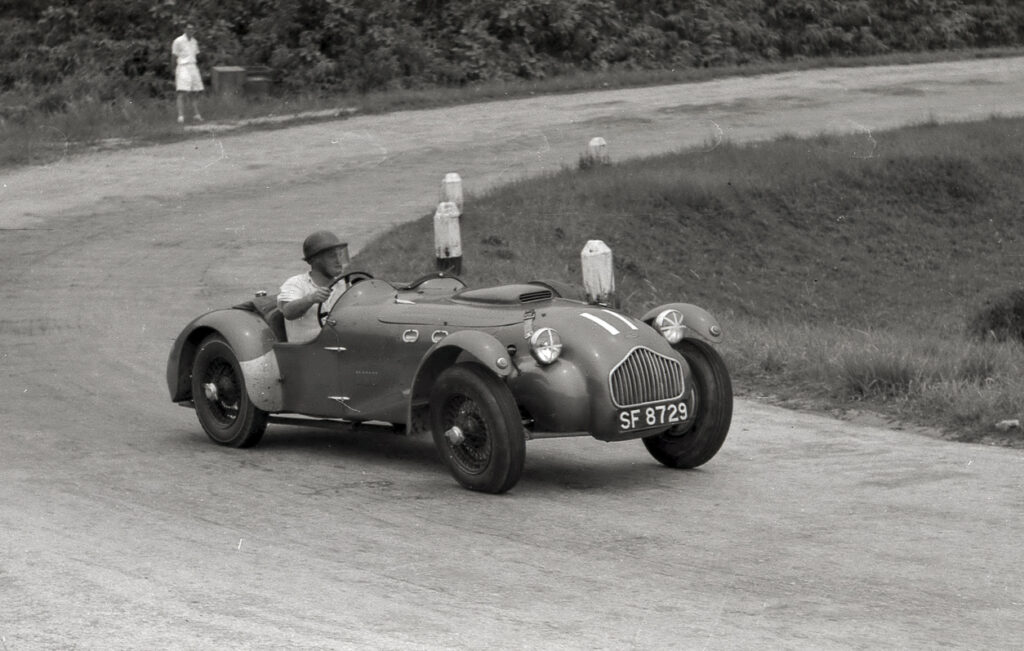
Phil Caroline’s Allard J2X was a regular competitor at the Gap Hill Climb…and almost every other speed event held in Singapore throughout the 1950s.
Chan Lye Choon’s white Aston Martin DB3S at the May 1957 Gap, following earlier factory modifications to aid cooling.
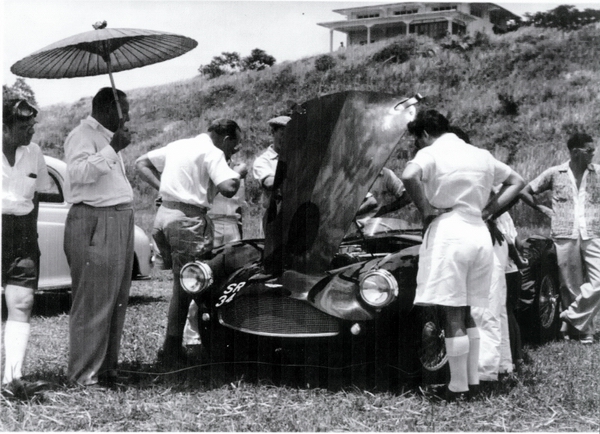
Everyone want to have a look a the newest Aston Martin sports car in Singapore…This photo is one of the earliest of the cars after it arrived from the UK.
The Aston Martin DB3S won the Sports Cars Unlimited class with a 52.50 second run, significantly slower than FTD set by Lim Peng Han in the Lim Special.
That May event was also the first time Chan Lye Choon’s white Aston Martin DB3S [See FOR THE PRICE OF A HOUSE] faced Bernard Arnold’s Warrior Bristol [See JUNGLE WARRIOR] met at the Gap. Chan’s #31 car won the Sports Cars Unlimited even with a 52.50 sec run with Freddie Pope (Jaguar XK140) second and Bernard Arnold (Warrior Bristol) third with a 53.28 sec run.
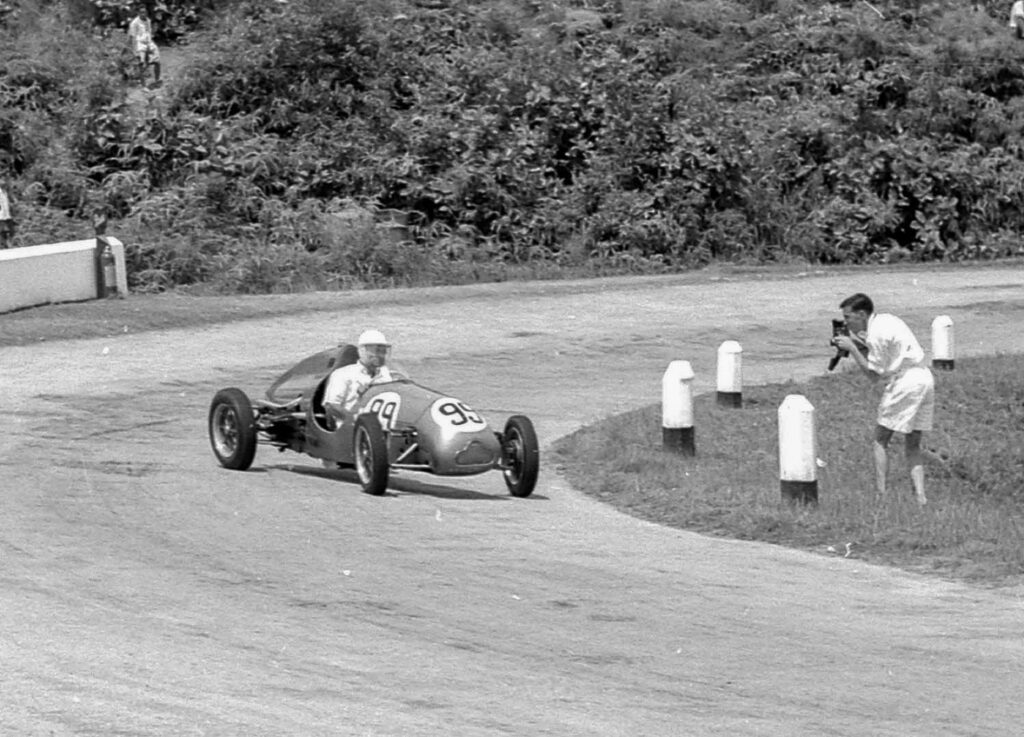
Roger Alton takes a photo an oversteering Cooper JAP with Loris Goring perched by the milestone doing the very same thing.
TYRE GAP
By 1960, a new crop of drivers had emerged, younger, more affluent and often educated outside of the region and consequently familiar with the latest must-have road-registered sports cars. Sponsors too were making their presence felt.
The Malayan Emergency was officially over and the little island that had a population of 1.07 people when the Gap Hill Climb was first run in 1951 was starting to frighten local politicians rapid growth to 1.63 million people.
The bi-annual Gap was now so popular tyre company Dunlop became the anchor sponsor for event from 1960. Dunlop, and the bearded image of John Boyd Dunlop on the cover of the event programs, was soon synonymous with this event.
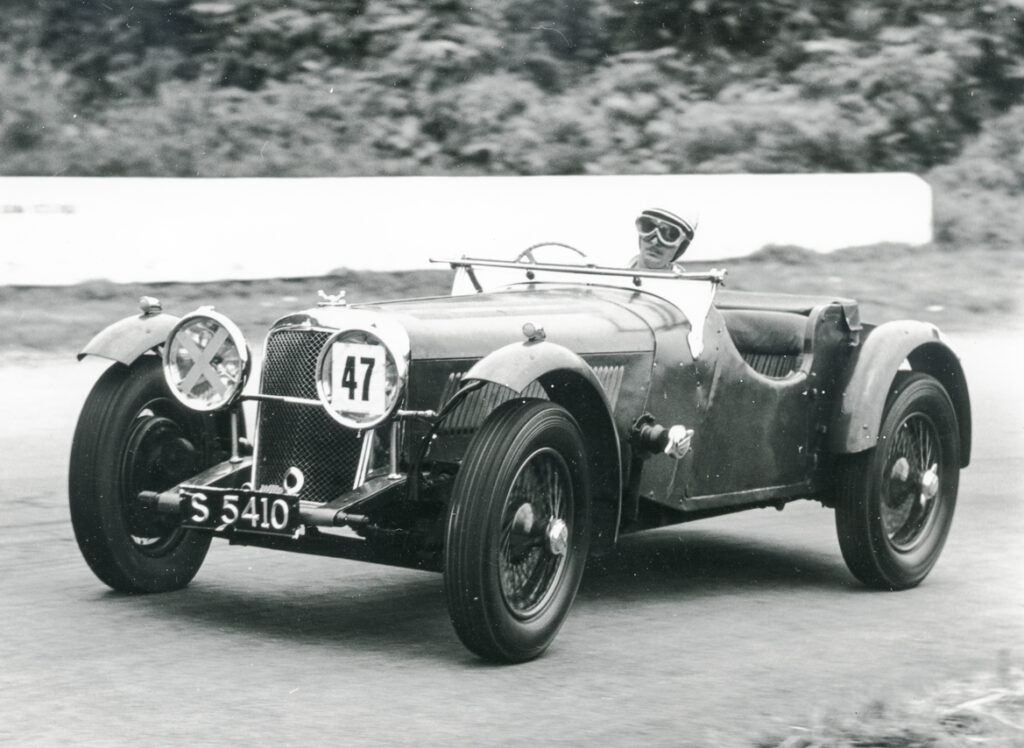
An SS100 that participated in the 1940 Johore Grand Prix…resurrected post war and regularly campaigned by Alan Lowe at hill climbs, sprints and even the Grand Prix races.
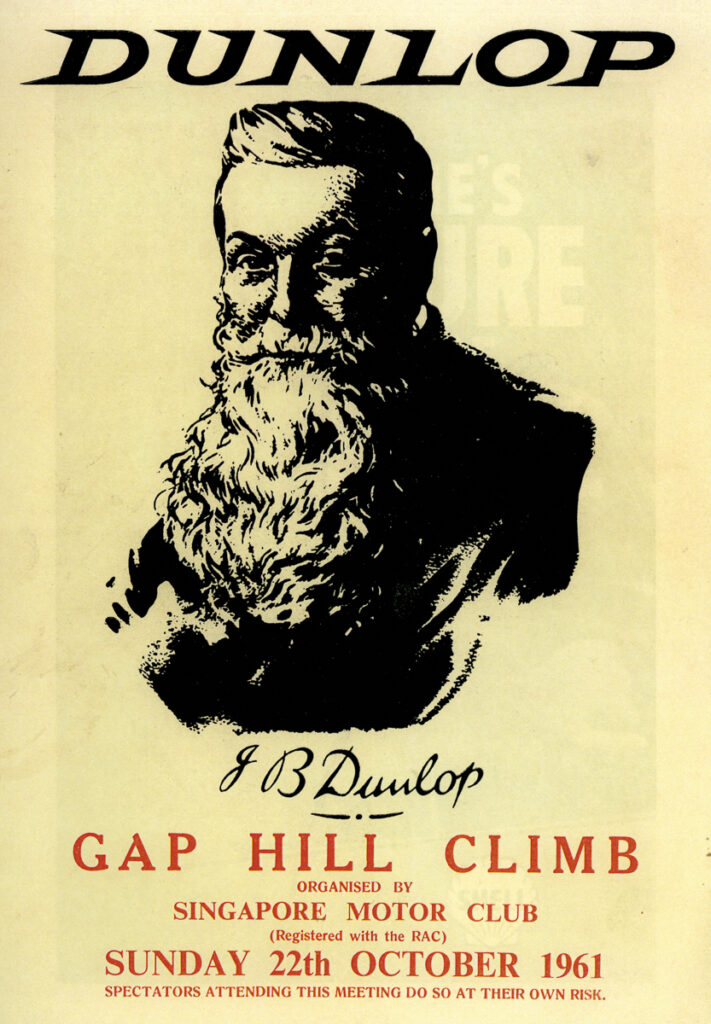
Dunlop title sponsorship began with the 8 May 1960 Gap Hill Climb. Dunlop’s ubiquitous CR65 racing tyre had yet to arrive (it was only developed in 1965).
As there was no permanent racing circuit in Singapore or Malaysia at the time, the Gap and other speed events served those who wished to test their cars ahead of bigger Grand Prix races in Macau, Singapore, Kuala Lumpur and Johore.
Chan Lye Choon, owner of Eastern Auto, agents for Citroën and Aston Martin in Singapore, put his Aston Martin DB3S (See FOR THE PRICE OF A HOUSE) and Lola Mk1 FWE Climax (See TROPICAL LOLAS through their paces here before shipping them off for the Macau Grand Prix.
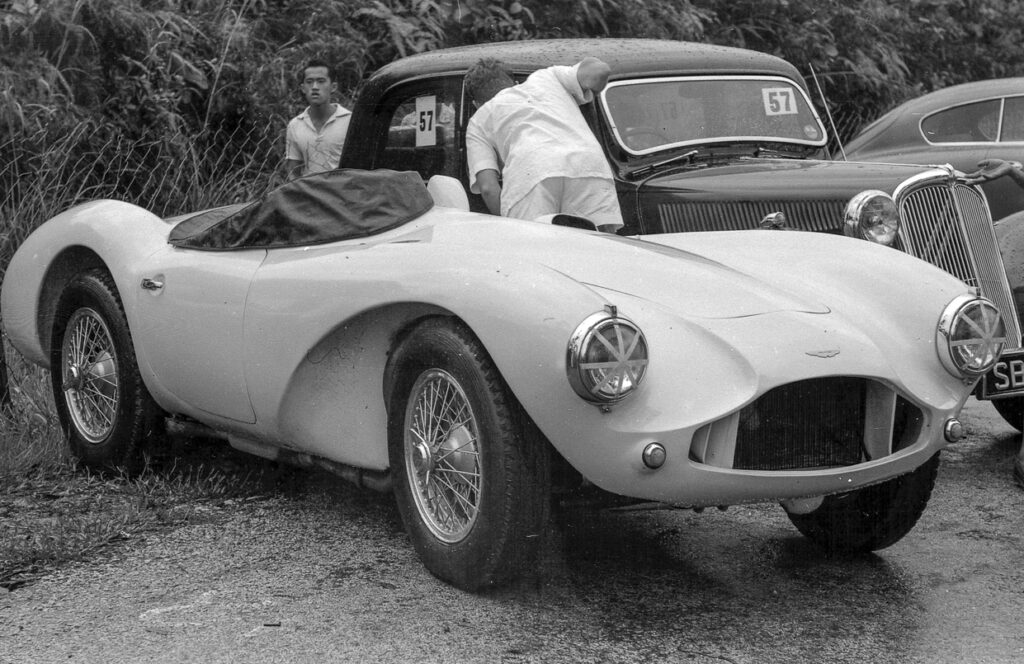
An unadulterated Aston Martin DB3S at the Gap, sans front air scoop. The photo dates from 1956. The history of this car is recounted in FOR THE PRICE OF A HOUSE – The story of DB3S/106.
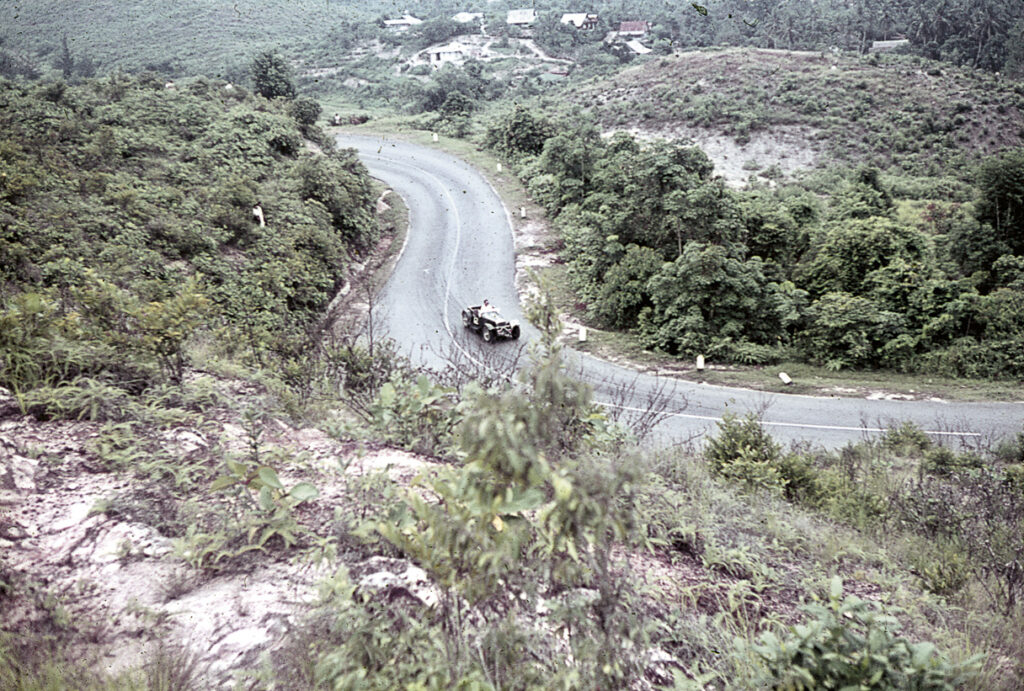
Hillside view of an SS100 Jaguar ascending the Gap.
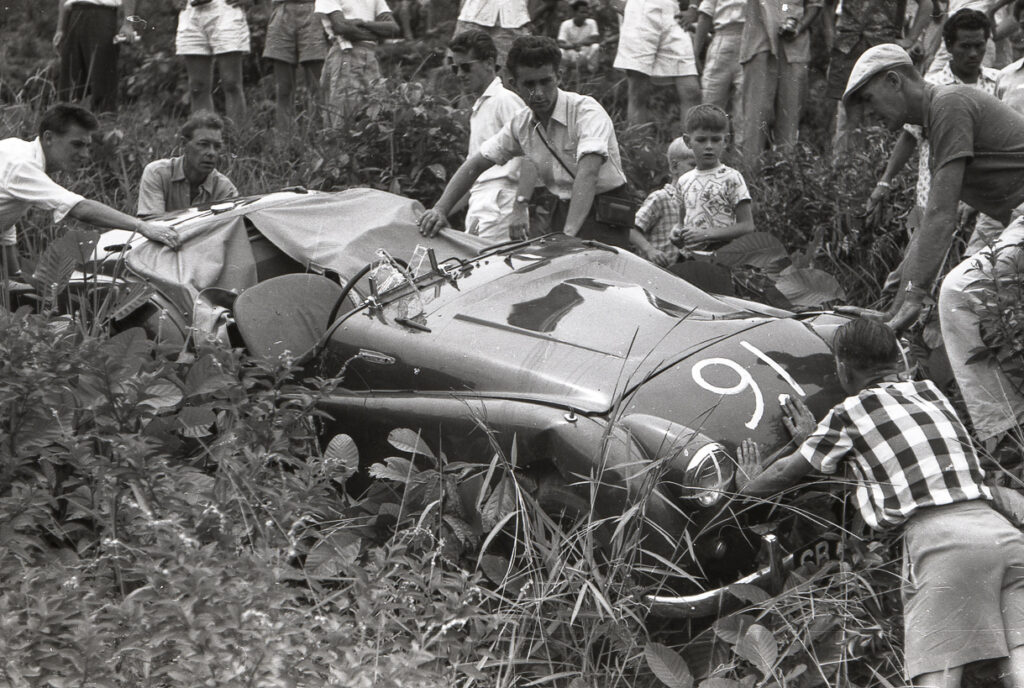
Such events were always fraught with danger, particularly so on roads that were smeared with diesel from trucks and busses.
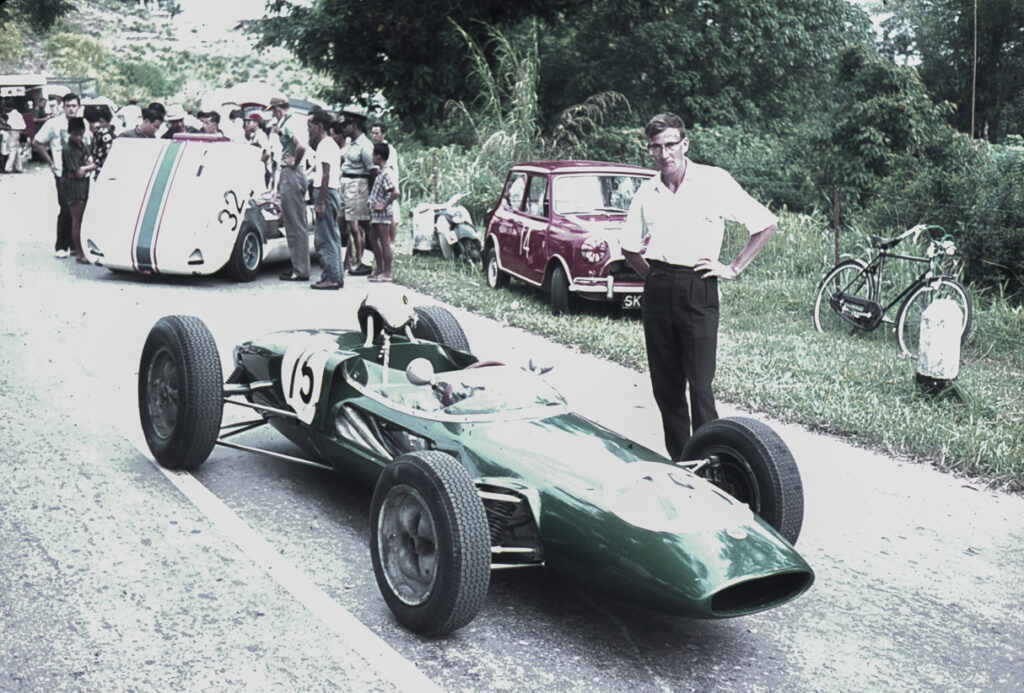
The local racing experts will know the cars in this photo – from the ex-Chan Lye Choon Lotus 20B, to the Alan Bond Lotus 23B.
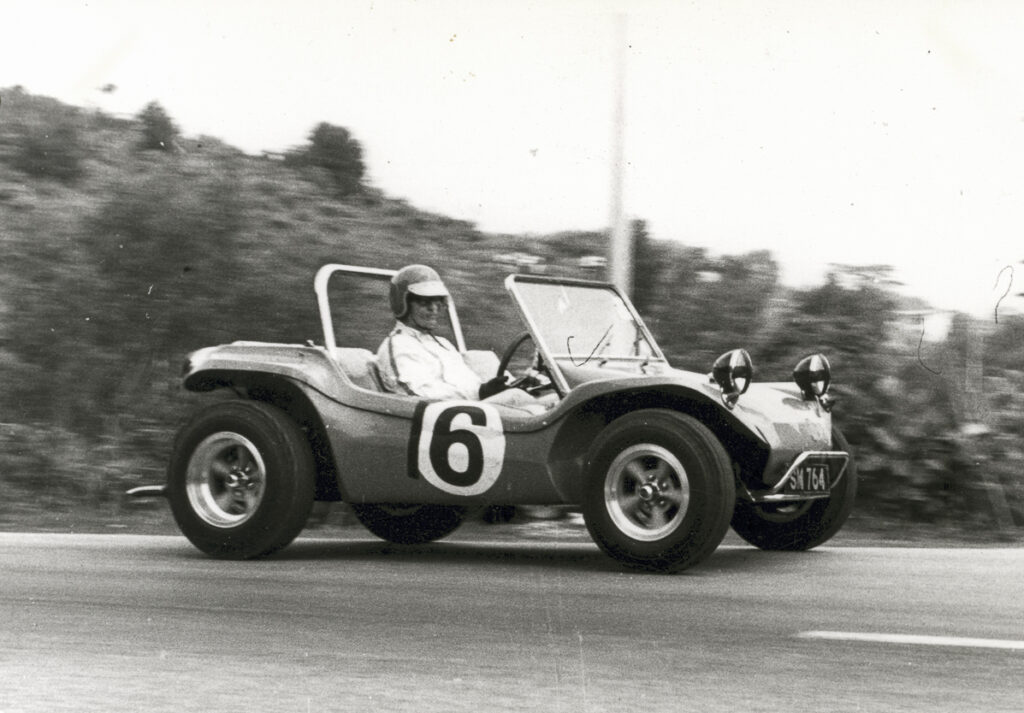
A Singapore-registered Beach Buggy at the Gap in the early 1970s.
The Dunlop Gap Hill Climb, as it was renamed from 1960, soon became a biannual affair. They were colourful weekends of racing which featured all manner of cars and bikes – from single-seater Formula Fords, Jaguar E-Types, roadside-prepared half-cuts, to Beach Buggies and ‘Easy Rider’ Suzukis with monkey bars.
Speeds attained along the course were nothing short of scary. Over time, this, along with the rapid pace of housing development in the Pasir Panjang area, made it increasingly difficult for the organisers to obtain appropriate government approval to hold the event on a road that linked Pasir Panjang Road with Kent Ridge and Clementi Raod.
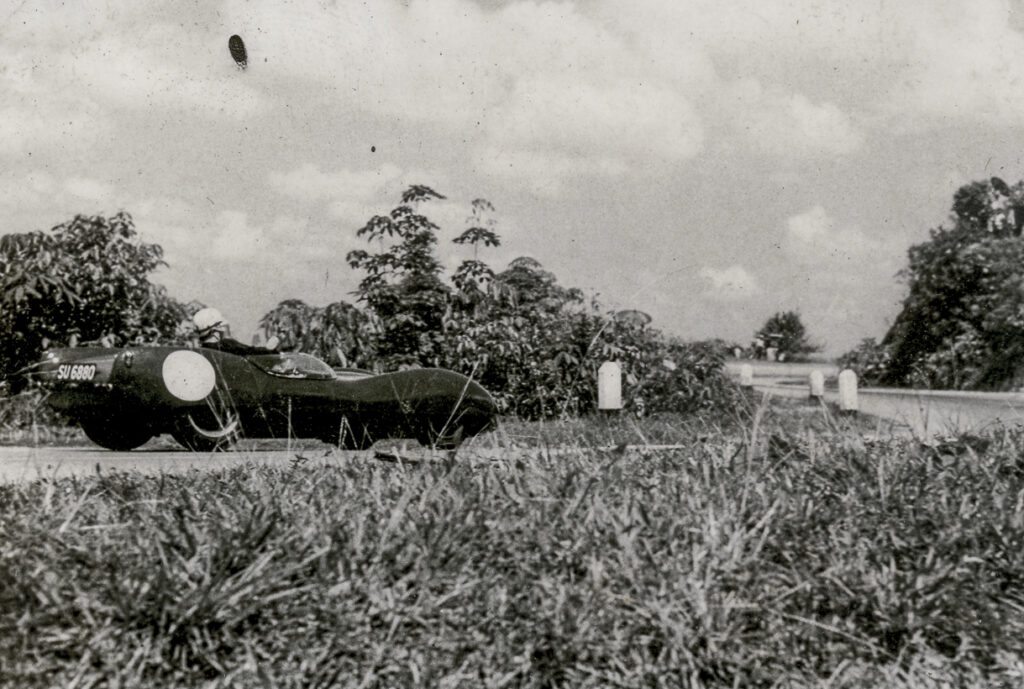
Debut run for Peter Brown’s Lotus 17 at the 2 April 1961 Gap. The car was the ex-1959 Le Mans works car with <1-litre motor but now ran a 1098cc Coventry Climax motor.
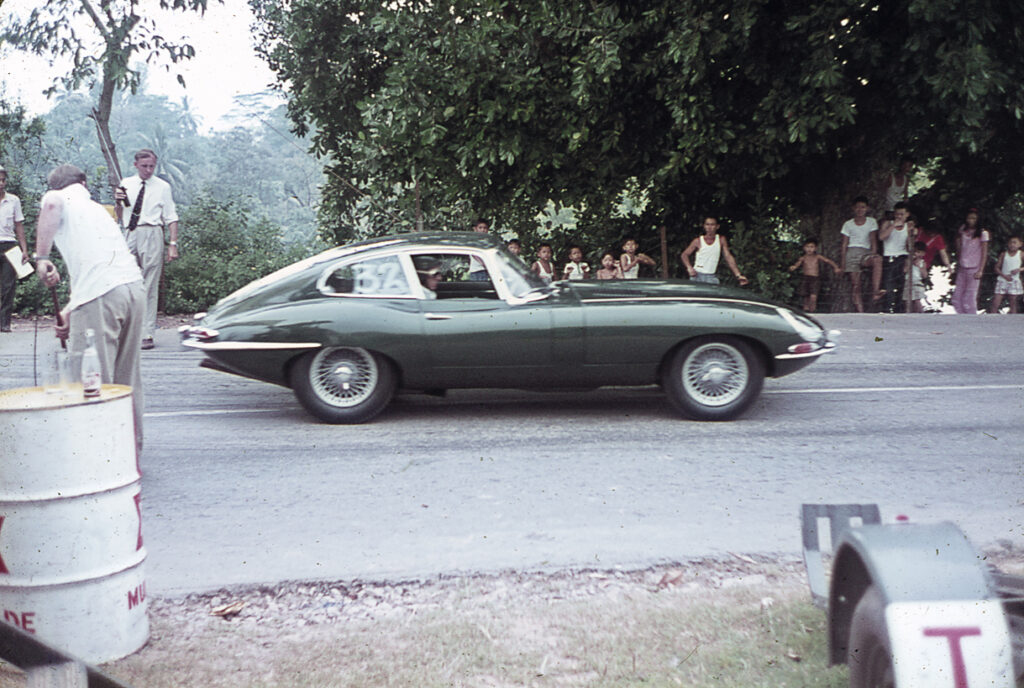
Alan Bond and his Jaguar E-Type Coupe at the start of the 31 May 1964 Gap Hill Climb. Look closely and you may see a “For Sale” sign on the rear windscreen.
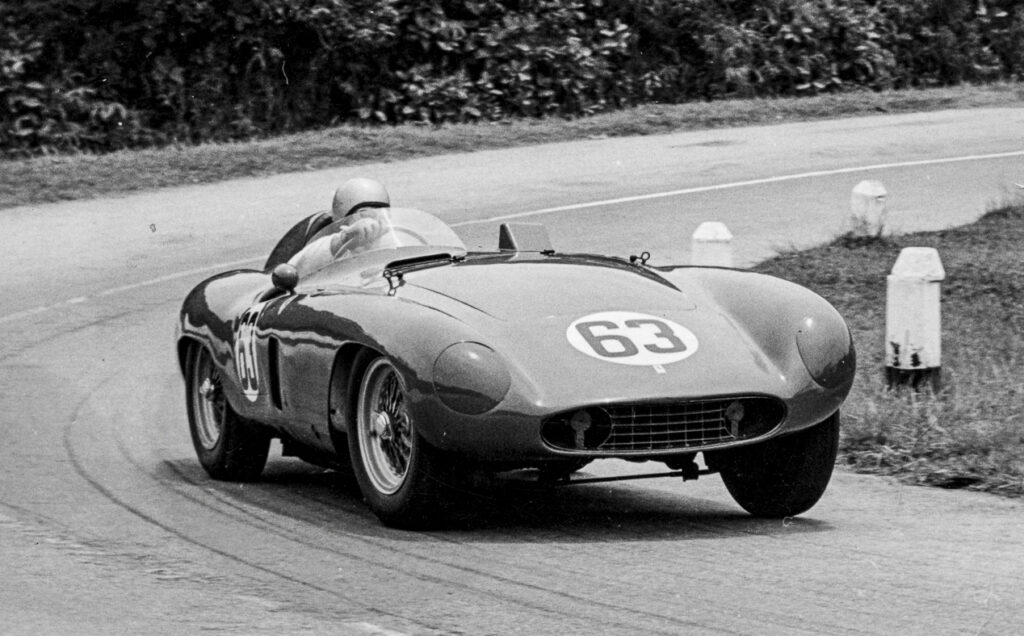
Jan Bussell with his Ferrari at the Gap in the 1960s. See JUST THE RIGHT AMOUNT OF TORQUE
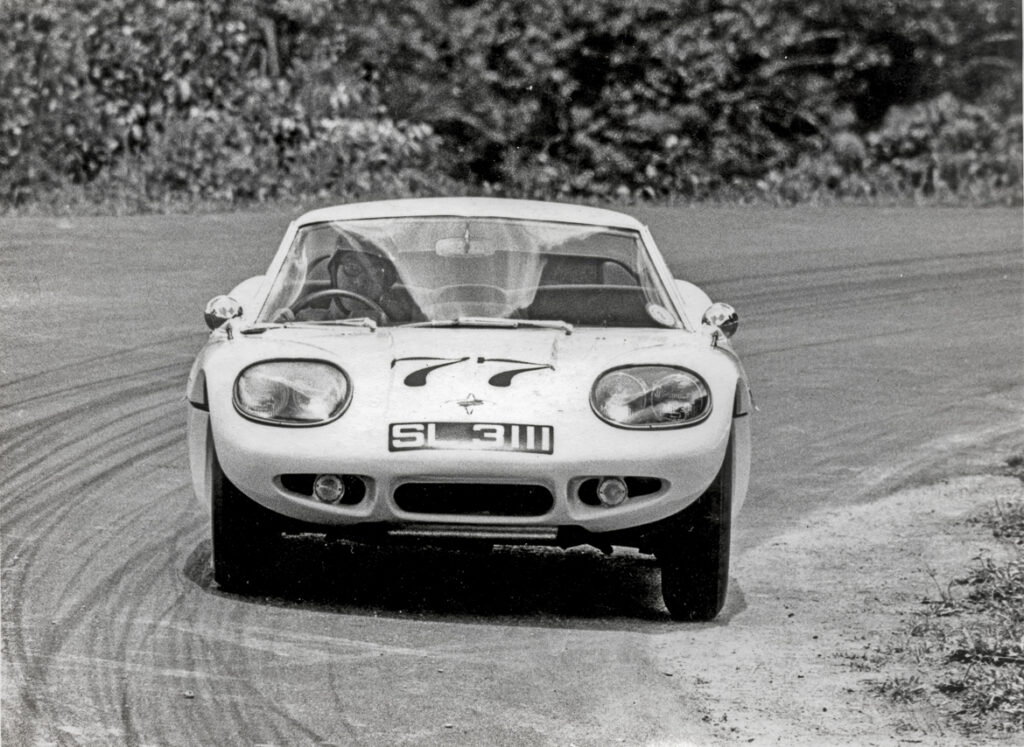
Robert Wong with some oversteer at the Conrod Canyon Hairpin in his Marcos GT.
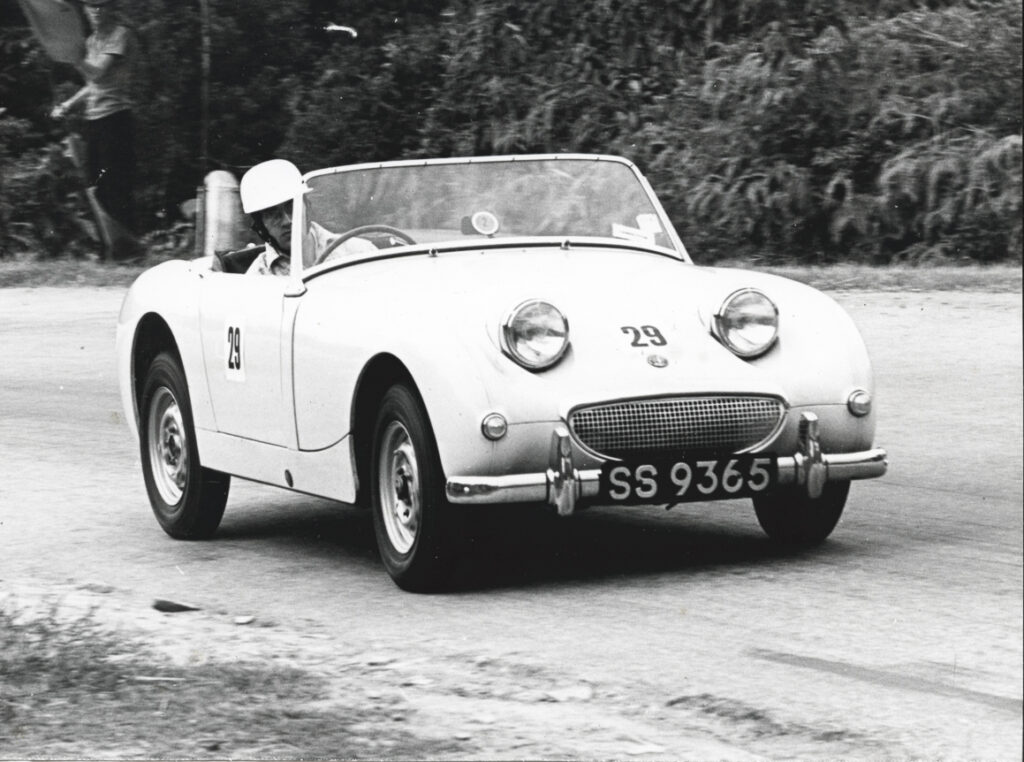
Daily transport for a Sunday outing at the Gap.
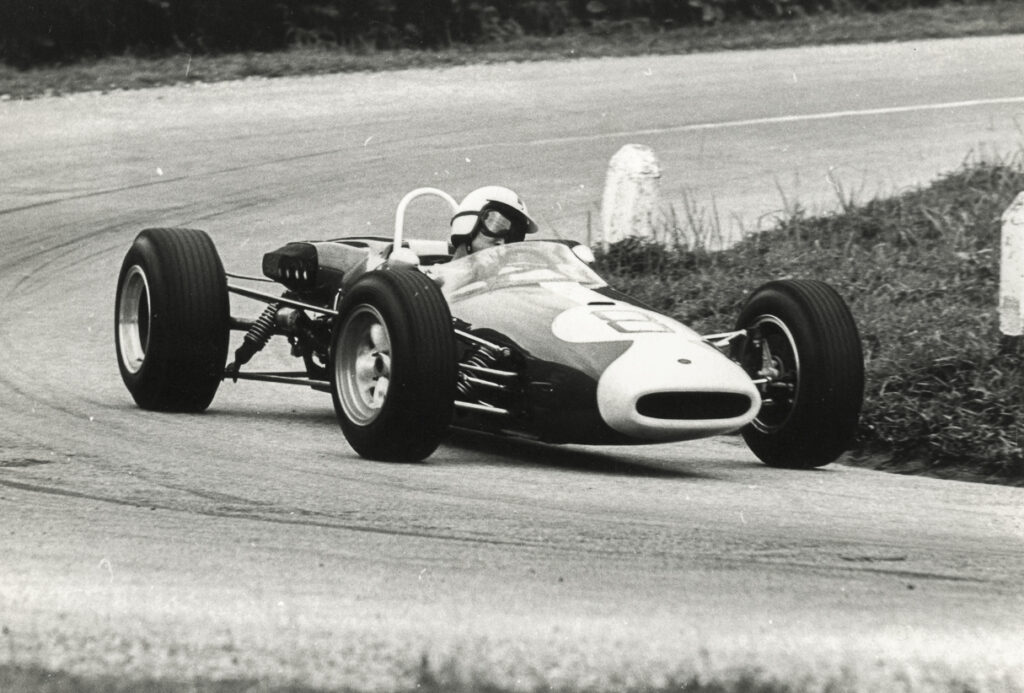
Lee Han Seng and his Brabham BT18 at the Gap.
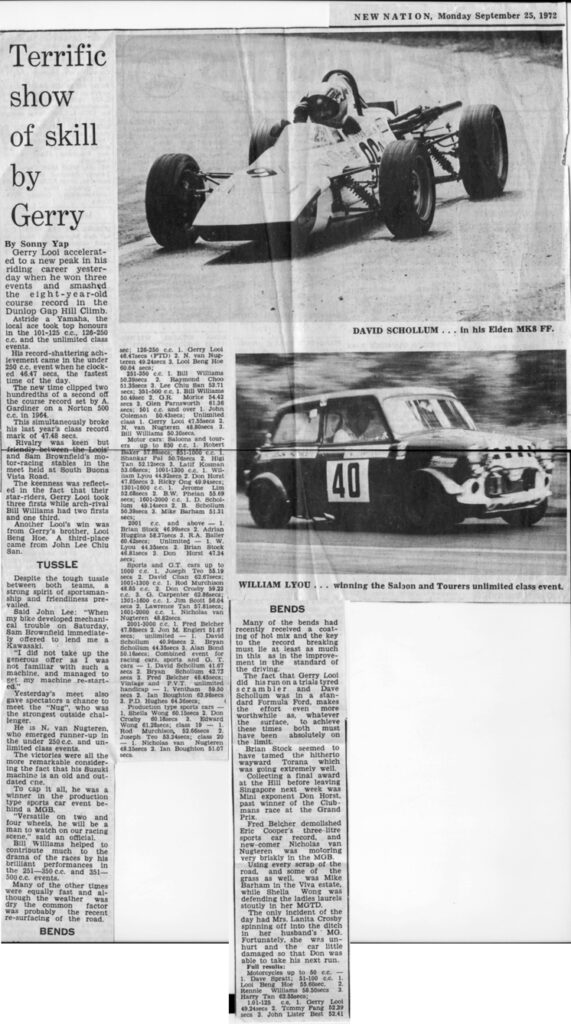
Newspaper coverage of the September 1972 Gap Hill Climb. The entry list includes many famous names in Singapore motor sports.
The writing was already on the wall, well before racing was banned on the island. Entries dwindled, local interest dwindled and what remained seemed to be a bunch of expats who battled on. 1972 saw the monumental tussle between two such expats, Dave Schollum and Dick Jordan. Schollum had a Formula Ford Elden, and Jordan had his road-registered silver 1969 L88-optioned 7-litre Corvette Stingray (sourced from New Jersey). The course record swung back and forth before Schollum thrilled entrants and spectators alike when he pulled off a stunning run to take Fastest Time of Day at the September Gap.
LAST GAP
The last Gap Hill Climb was held in September 1973, the second of two held that year. The skies foretold the future of the sport in Singapore when they opened up during Saturday practice. On Sunday, 23 September 1973, Kiwi Bryan Schollum set FTD in his Elden PRH8 1600cc Formula Ford. It was not the all time course record (that was set by his brother Dave a year earlier, in the same Elden Formula Ford) but it was the last time the Gap Hill Climb was run.
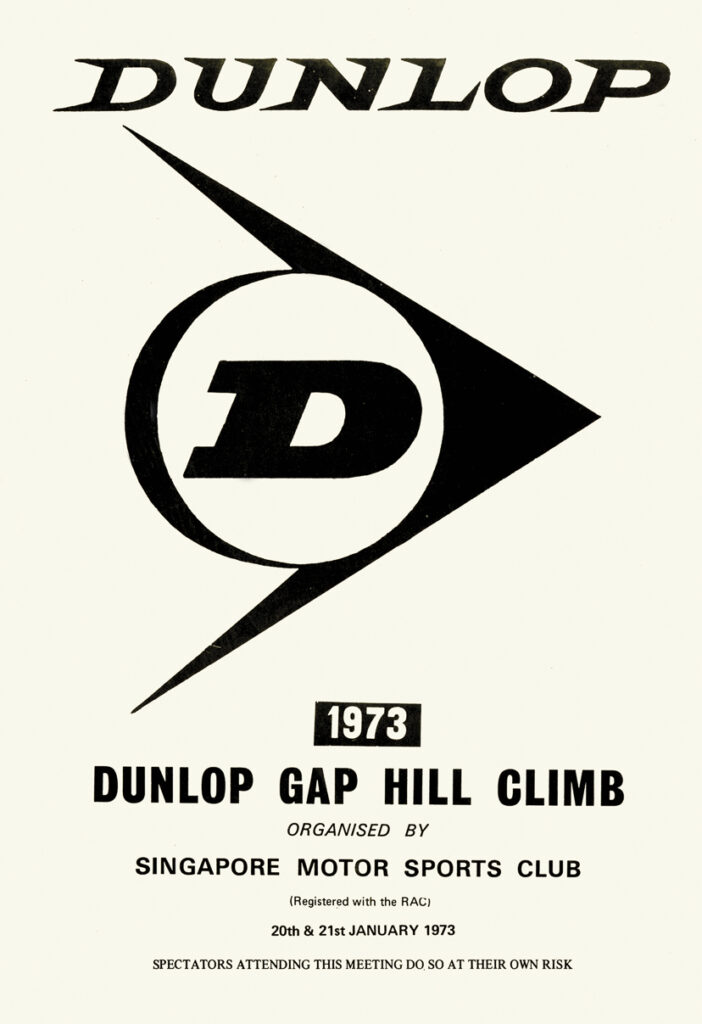
Flyer from the penultimate Gap Hill Climb flyer was a simply printed affair of just three sheets stapled together. Gone was the drawing of Mr Dunlop or the beautifully drawn illustrations of the 1950s, and gone too were the numerous advertisements of the earlier programs. It was a far cry from the races of the 1950s when entry lists topped 100!
The Gap Hill Climb, like the Singapore Grand Prix, was a victim of its own success. That it had survived at the same venue for 46 years is remarkable given the transformation that saw Singapore evolve from a colonial outpost in the early 1900s to a thriving entrepôt and manufacturing hub by the time the first oil crisis hit in 1973.
An essentially local event, it may not have ranked as highly in importance as the Upper Thomson Road Grand Prix, but it played a significant role in developing the local automobile cottage industry and provided members of the local motor sports club the exciting opportunity of going racing at least twice a year. And it taught drivers and riders how to stay on the road.
A scribe had written in an issue of the Singapore Motor Club gazette, “We could never forget that our hold on the Gap and Thomson Road is based on tradition rather than official enthusiasm for the sport…” That is probably true, but there was a good reason these two locations survived as race venues.
GAP HILL CLIMB RECORDS (motorcars only) 17
27 May 1951 – Bill Ferguson – Cooper JAP – 54.00 sec
28 October 1951 – C.P. Vaughan – Frazer Nash18 – 51.03 sec 9 (course record)
11 May 1952 – Neil Moncrieff – Cooper JAP – 49.8 sec
5 April 1953 – C.P. Vaughan – Frazer Nash19 – 48.25 sec (or 48.20 sec)
18 October 1953 – Neil Moncrieff – Cooper JAP – 47.08 sec (course record)
18 April 1954 – Jimmy Milne – Cooper JAP – 48.68 sec
24 October 1954 – Lim Peng Han – Lim Special – 48.48 sec
24 April 1955 – Neil Moncrieff- Cooper JAP – 46.99 sec (course record)
14 October 1955 – Jimmy Milne – Cooper JAP – 46.98 sec (course record)
26 April 1956 – Neil Moncrieff – Cooper JAP – 47.30 sec
14 October 1956 – Jimmy Milne – Cooper JAP – 48.69 sec
12 May 1957 – Lim Peng Han – Lim Special – 48.19 sec
6 October 1957 – Lim Peng Han – Lim Special – 48.00 sec
11 May 1958 – Lim Peng Han – Lim Special – 48.59 sec
12 October 1958 – Chan Lye Choon – Cooper JAP – 48.62 sec
24 May 1959 – Neil Moncrieff – Cooper JAP – 48.13 sec
4 October 1959 – Neil Moncrieff – Cooper JAP – 47.83 sec
8 May 1960 – Chan Lye Choon – Cooper JAP – 48.00 sec
9 October 1960 – Jimmy Milne – Cooper JAP – 47.99 sec
2 April 1961 – Lim Peng Han – Lim Special 1,100cc (S) – 45.42 sec (course record)
22 October 1961 – Peter Cowling – Cooper MkIV JAP – 45.80 sec
11 February 1962 – Peter Cowling – Cooper MkIV JAP – 47.05 sec
5 August 1962 – Peter Cowling – Cooper T51 FPF Climax 20 – (unknown time)
2 June 1963 – Peter Cowling – Cooper T51 FPF Climax 21 – 47.62 sec
3 November 1963 – Postponed to 1 December 1963
1 December 1963 – Angus Clydesdale – Lola Mk1 Special 22– 45.03 sec (course record)
31 May 1964 – Lee Han Seng – Lotus 22 – 42.56 sec (course record)
8 November 1964 – Rodney Seow – Merlyn Mk5/7 – 43.35 sec
30 May 1965 – Tony Goodwin – Lola Mk2 – 45.75 sec
28 November 1965 – Chong Boon Seng – Lotus Elan Roadster (unknown time)
29 May 1966 – Tony Goodwin – Lotus 20B – 43.07 sec
27 November 1966 – Mike Heathcote – Brabham BT2/6 – 43.31 sec
30 April 1967 – Lee Han Seng – Brabham BT18 – 41.09 sec (course record)
22 October 1967 – results not known
18 February 1968 – results not known
11 August 1968 – results not known
8 June 1969 – Dunlop Gap Hill Climb – Alan Davies – Newton Enterprise Mini Cooper S 1293cc – 43.39 sec
9 November 1969 – results not known
12 July 1970 – results not known
8 November 1970 – Alan Bond – Le Grand Twin Cam – 44.91 sec
21 February 1971 – Derek Madradi – Mini Clubman – 47.53 sec
21 November 1971 – Lionel Chan – Brabham BT15/16 – 44.19 sec
23 January 1972 – Sonny Rajah – Lotus Europa – 45.37 sec
24 September 1972 – Dave Schollum – Elden PH8 Formula Ford – 40.96 sec (all time course record)
21 January 1973 – William Lyou – Mini Cooper – 43.97 sec
23 September 1973 – Bryan Schollum – Elden PH8 Formula Ford – 42.04 sec
END OF PART 3
Words By Eli Solomon
Images and Film from Rewind Media Archives
Footnotes
- Malaya Tribune, 2 September 1927, p.7. The course covered the Gap Road, “300 yards beyond the junction of the Pasir Panjang Road and Gap Road and the finish at Bare Hill, a distance of approximately 1600 yards.”
- https://thesmartlocal.com/read/exciting-roads.
- See Winsley, T.M. A History of the Singapore Volunteer Corps 1854-1937. Singapore Government Printer Office, 1938. (Two editions of his book were issued – a bound version and a paperback version.) Tom Mead Winsley’s (d. 4 June 1957, aged 60) book makes the earliest reference to Singapore’s hill climb off Pasir Panjang Road and gives the background of its origins and initial success from the first meeting organised by the Singapore Volunteer Corps in early September 1927. Winsley wrote that key reason for hosting a motorcycle trial at the Gap was to promote the S.V.C.’s motorcycle platoon. The Motor Cyclist Platoon had been brought up to full strength by 1926 and from it was formed the Intelligence Platoon of the S.V.C.; with the increasing popularity of the small car, however, it was difficult to find members with motor cycles ad the Corps eventually had to provide motor cycles on the establishment for dispatch and intelligence work.
- Drill Hall – Towards the end of 1907 the Ford Fullerton site was required for other buildings, so the S.V.C. Drill Hall was removed to Raffles Reclamation on Beach Road by the old Gaol, adjoining the Chinese Volunteer Club, where it was reopened on 22nd January 1908. It remained in continuous use until 1932 when a new headquarters was completed on the adjoining ground. In 1928 and 1929, the S.V.C. Gap programs were available at Little’s and Robinson’s stores.
- ibid./efn_note] prior to the Sunday event, which were to be presented to the winning competitors after the last event, at the finishing post, by the Commandant, Lt-Colonel Postlethwaite, O.B.E. Interestingly, while the press results don’t show an entry for one James Alexander Milne but more on that later in this article.5 In a Singapore Free Press Supplement dated 5 October 1957 (pg 15), Edin Peters wrote that Jimmy was the “only competitor at the present meeting to have taken part in the first Gap hill climb…On that occasion he was astride an O.E.C. 350cc twin motorcycle. Recalling that meet, Milne told me: ‘About 12 motor cycles and about 20 cars took part. All motor cyclists were compelled to wear a topee…'” Milne may have been referring to a subsequent event – probably 8 September 1929 event, rather than 1927. At the 1929 S.V.C. Gap, Milne’s entry in the press (Singapore Free Press, 6 September 1929, pg 16, is listed as a Rex Acme.
- Two Lea Francis cars were available for sale in Singapore by mid-1928 at agents Guthrie & Co.’s showrooms at 15 Grange Road. The models were a 12.22HP 4-seater and a 14.40HP 6-cylinder 5-seater Tourer.
- The old racecourse was located on Racecourse Road with the area covering Owen Road, Buffalo Road etc.. The new racecourse was located on Bukit Timah Road.
- .The Farrer Road Sprint was a standing-start Half-Mile sprint that took place on Sunday 25 September 1938. The start line was a short distance beyond the bridge at the Bukit Timah end of Farrer Road.
- On 11 September 1938, the AAM’s Seremban Branch organised a Half Mile Speed Trial at 1st Mile, Tampin Road and it is here that some of Malaya’s top enthusiast showed up: Harry Marriott in his 1936 Supercharged MG PB; C.O. ‘Mick’ Jennings in his Supercharged MG PB (registered PK925 & later S724) – featured in THE REAL CAPTAIN MG; Lim Peng Han, in the first recorded instance of a local Special – road registered S749 and simply referred to as Number 1. This Special set Fastest Time Of Day at the meet. S749 was a 3.6-litre Ford V8-engined contraption built up from Morris parts. The story goes that its shape was conceptualised by Lim and HWM-founder John Heath at the back of a class at the Chelsea School of Automobile Engineering when Lim was studying there in the early 1930s. With hood erected, S749 was Lim’s family transport for his wife and her siblings, the waterfalls at Johore’s Kota Tinggi a favourite excursion.
- Anthony Dockray Phillips – Oxford graduate, keen vintage motoring enthusiast, and a good marksman (he bagged a couple of prizes at the 7th Annual RAF Far East Command Open Rifle Shot in Singapore in November 1939) Tony Phillips arrived in Malaya as an Instructor to the Malayan Volunteer Air Force, aged 20. He was based at RAF Tengah and promoted to Flt.Lt. on 19 December 1940.
- Arthur James Loughborough and Anthony Phillips were both stationed in Singapore with the RAF. Loughborough was promoted to Flt.Lt. on 15 December 1940, a few days before his friend and fellow pilot Anthony Phillips was promoted to the same rank.
- The original date for this event was set for Sunday, 13 May 1951, with practice on Saturday. The motor club only decided to change the date to 27 May a few days before the scheduled Whitsun 13 May date. In place of the Gap was the Bukit Batok Hill Climb. That same weekend, the Perak enthusiasts held a circuit race at Ashby Road. The revised Gap date gave competitors from upcountry an opportunity to race in Ipoh on the 13th and in Singapore on the 27th.
- James George Milne Ferguson [b. 27 April 1912, Chemor (also known as Chumor), Perak, Malaysia. Son of James Scott Ferguson [23] and Nellie Milne [23]. The Ferguson family lived at the Changkat Kinding Estate (also known as Kinding Rubber Estate Syndicate), located 2.5 miles from Chemor in the Kinta District. Bill Ferguson’s Cooper Mk IV car, chassis 10/13/49. Ferguson saw the car at the 100-mile Silverstone road race (driven by Alan Ripon) in 1950 and eventually purchased it for £500. The car was maintained by Wearne Brothers’ mechanic Stan Moore in Kuala Lumpur and by Ferguson’s own mechanic, Choy Yee Ming. The car made its Malayan debut at the Lornie Kilo, 29 April 1951. The car changed hands a number of times before going to Francis Jan Bussell in Singapore. Bussell put it up for sale in September 1959 (with 998cc JAP motor and a trailer and priced at S$2,200). Peter Cowling first appeared in this car at the 1960 Johore Grand Prix 20-21 February 1960 (#74, with 499cc motor). See also FORMULA ONE RACE WIN – COOPER-JAP in 1951
- Lim also win the 1500cc and under Racing cars class with a 48.54sec (class record).
- Reference to the flu epidemic and how it affected some racers during another event held in 1957 can be found in LANDING AT CHANGI in 1957 .
- Course records listed in bold script
- see THE COLONEL, FANE & A FRAZER NASH
- see THE COLONEL, FANE & A FRAZER NASH
- For the August 1962 Gap hill Climb, three new classes for cars were added – two for Sports/Racing Cars (1500cc and Under/1501cc and Over) and one for Racing Cars Unlimited
- see COOPERHOLIC COUP
- see TROPICAL LOLAS

